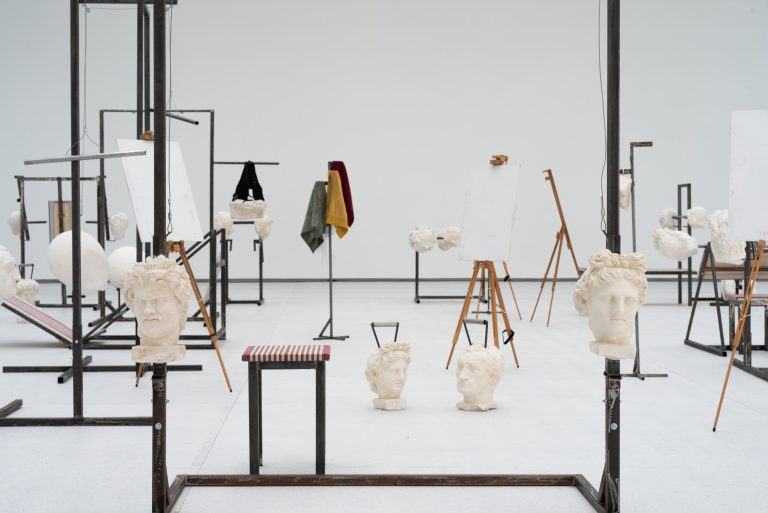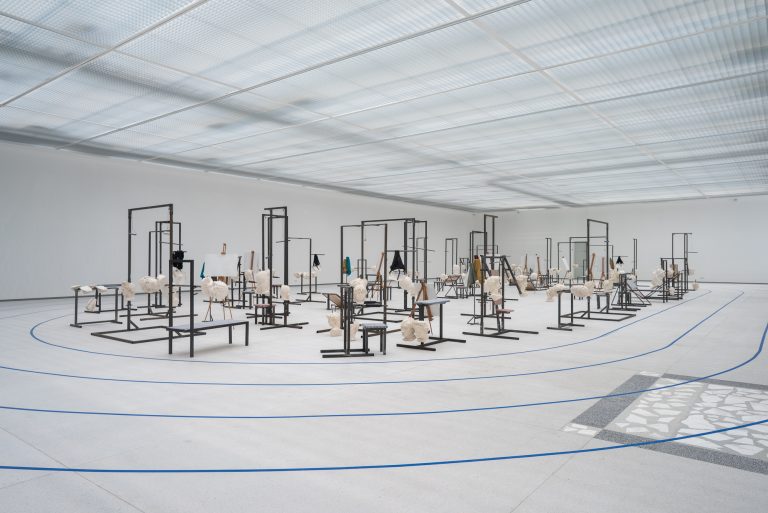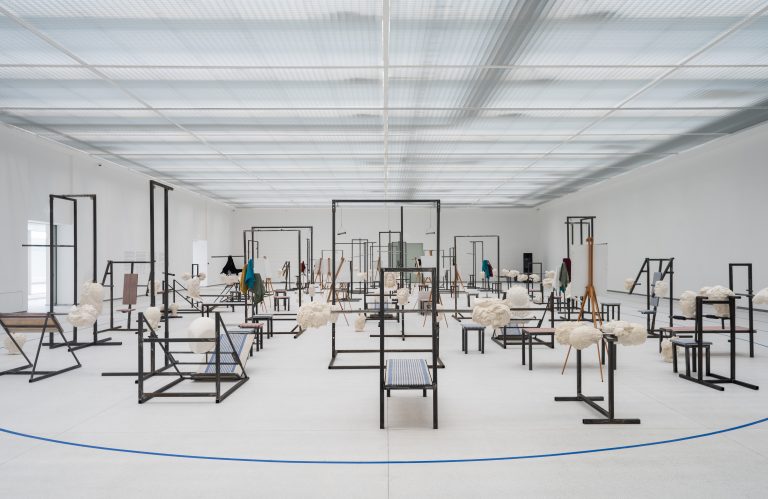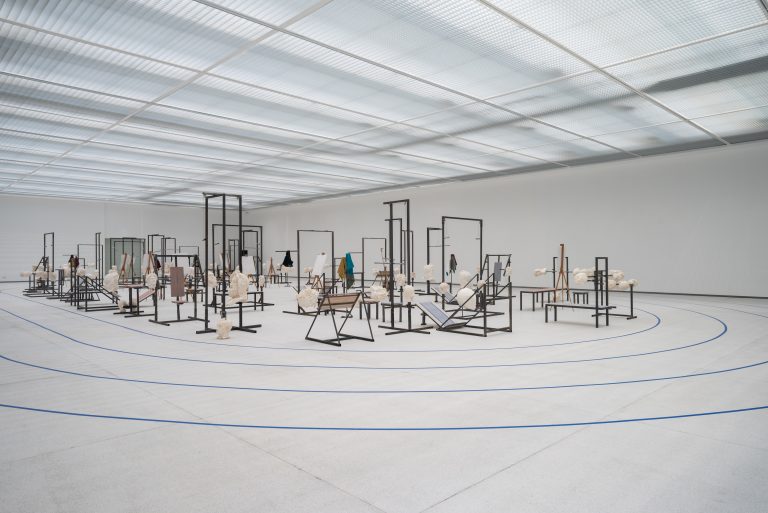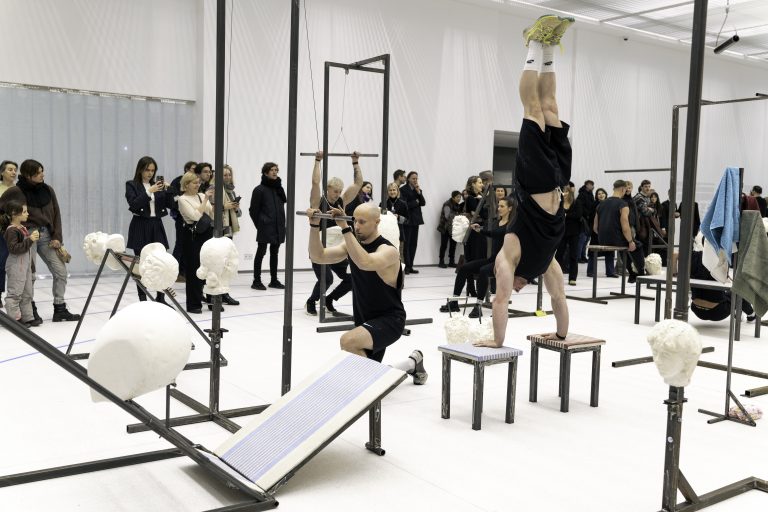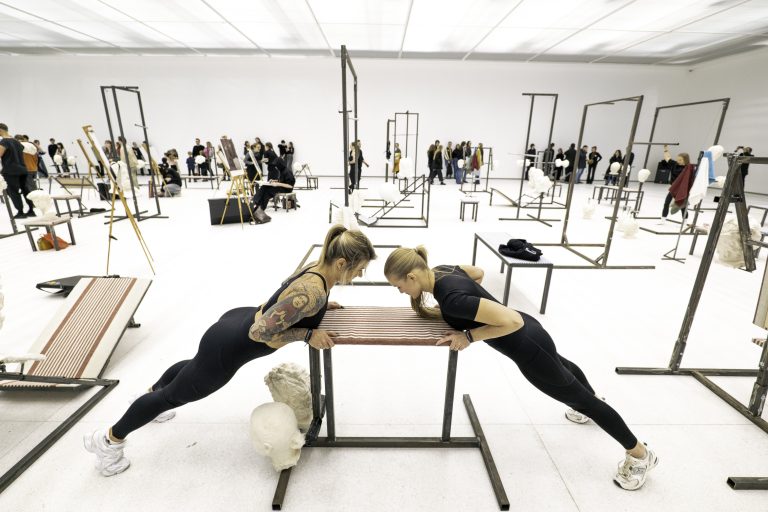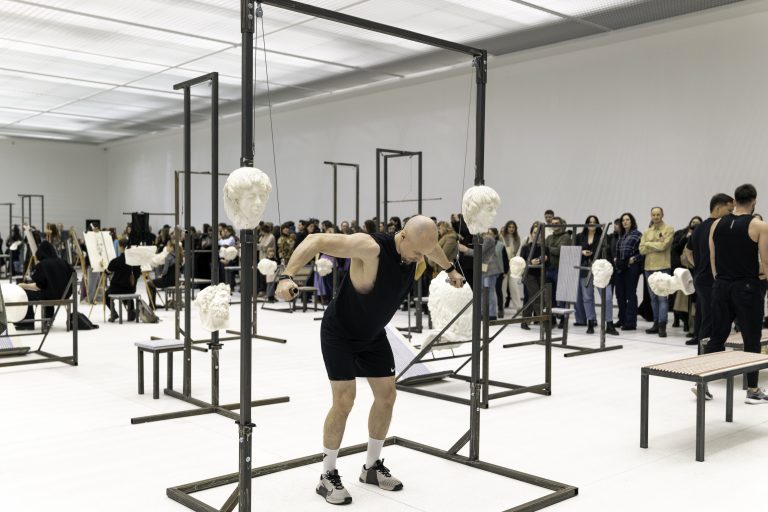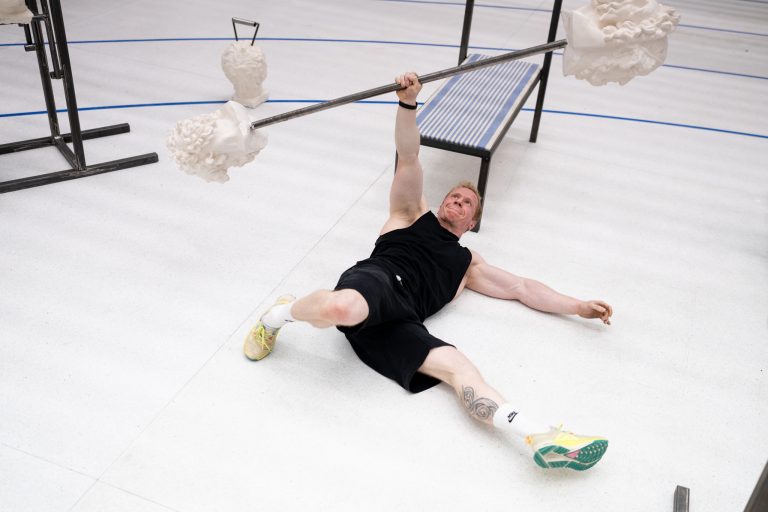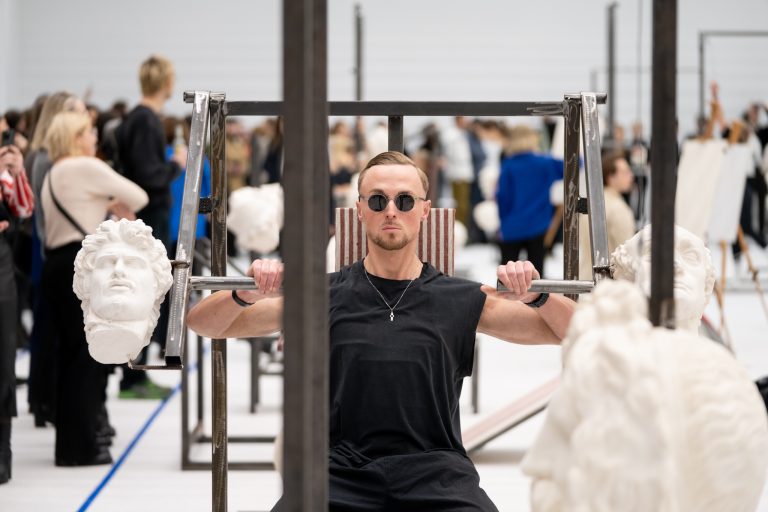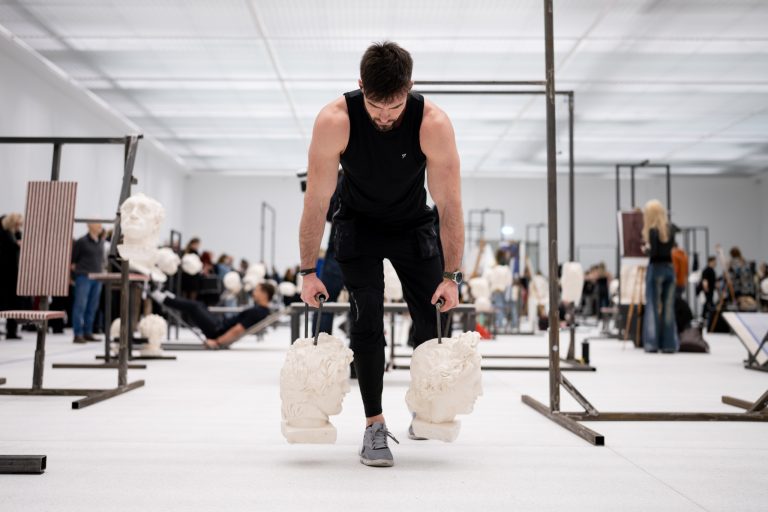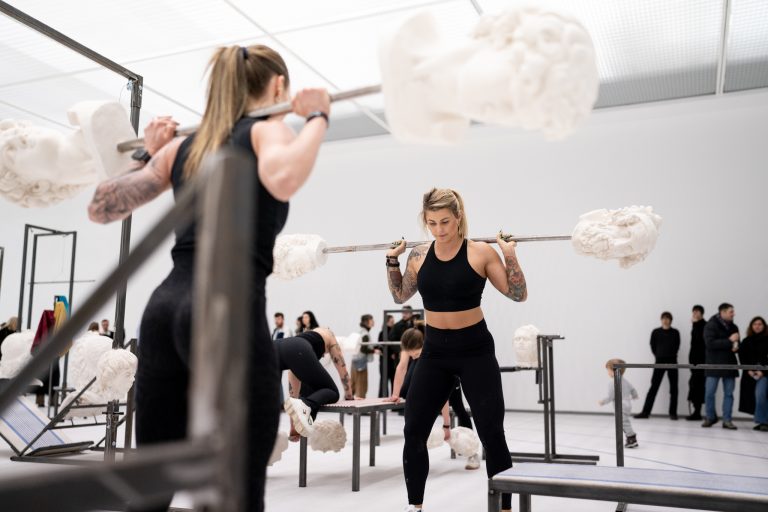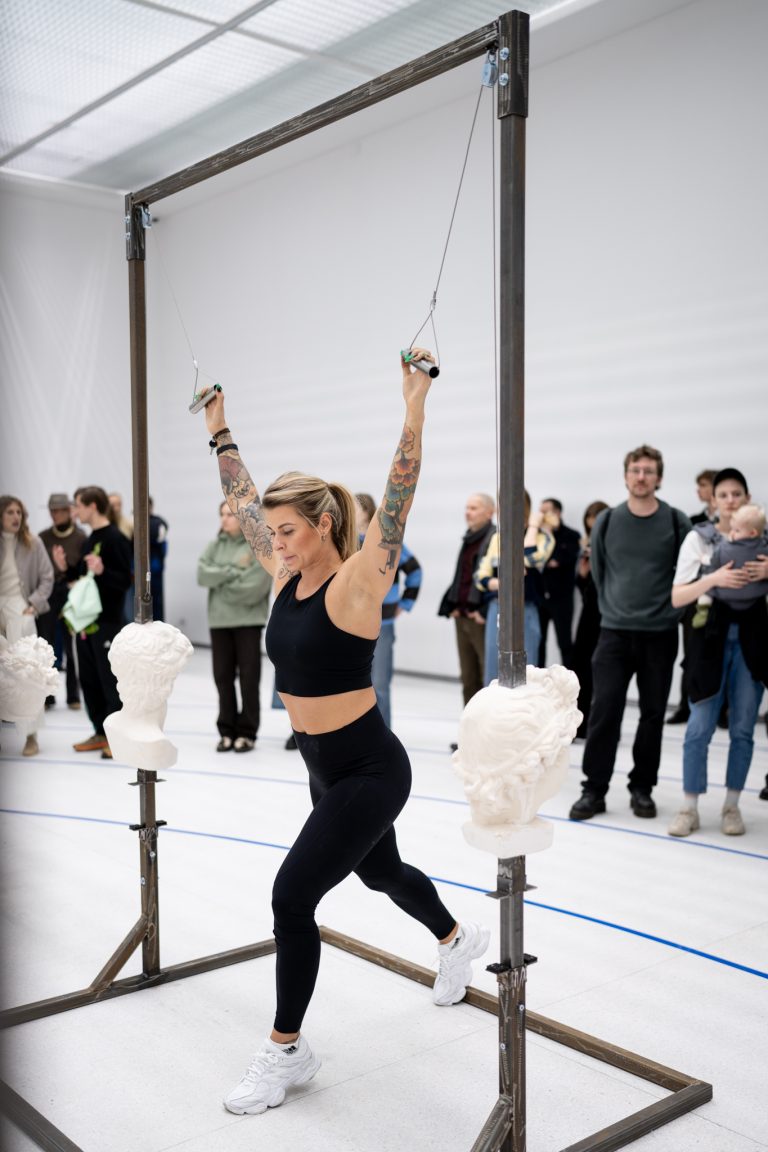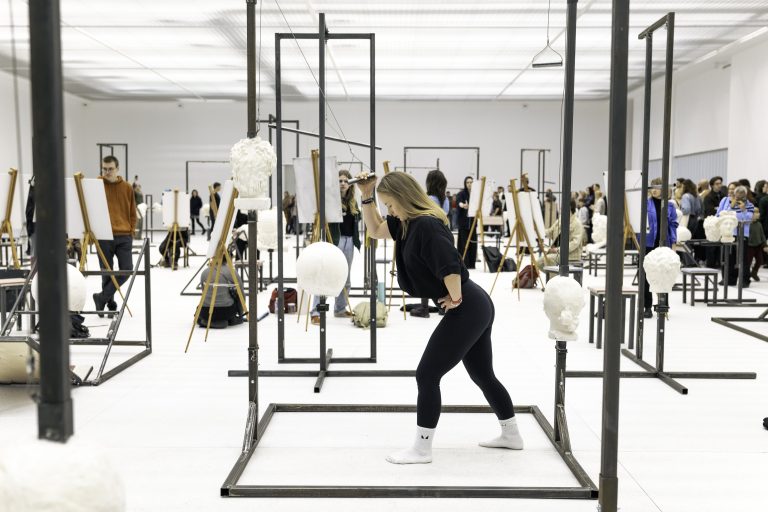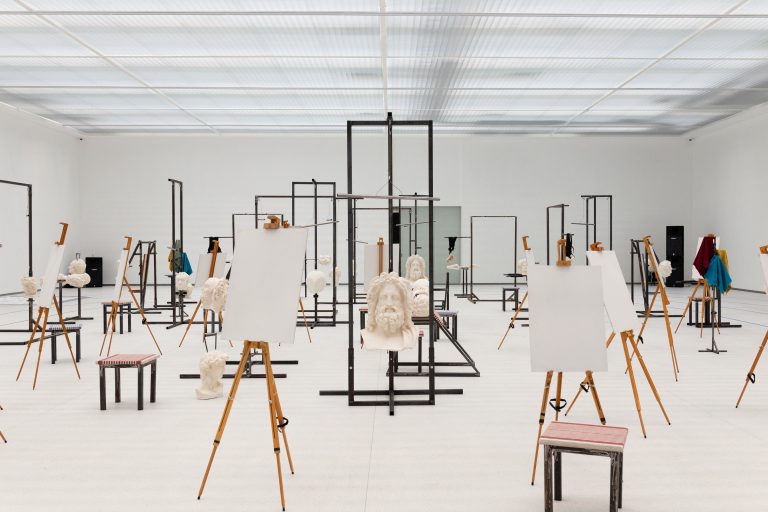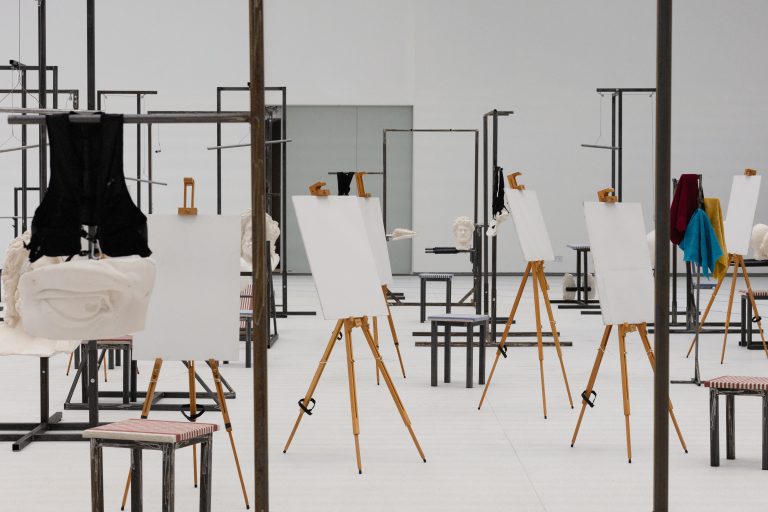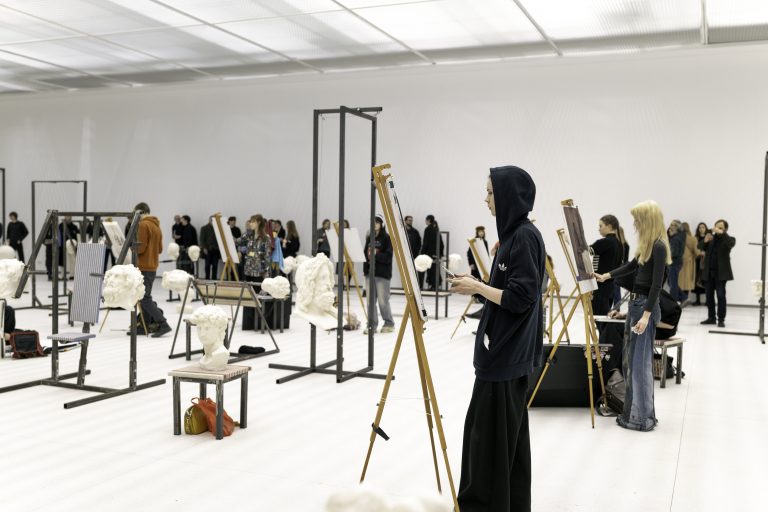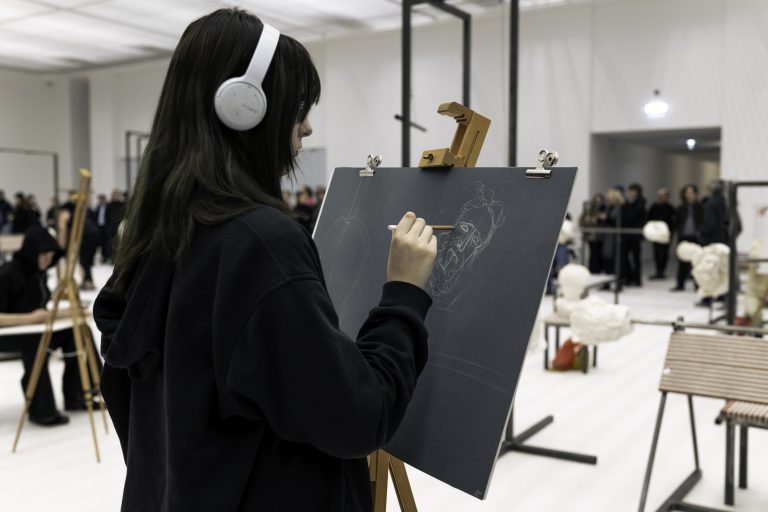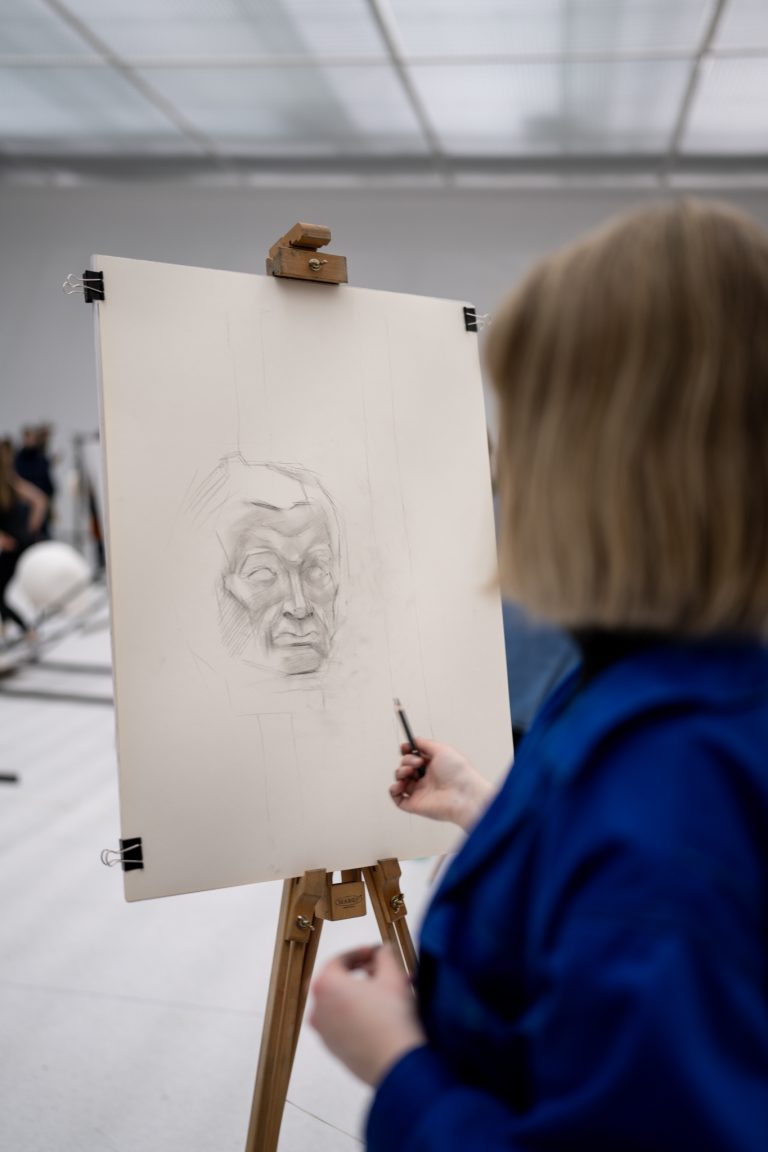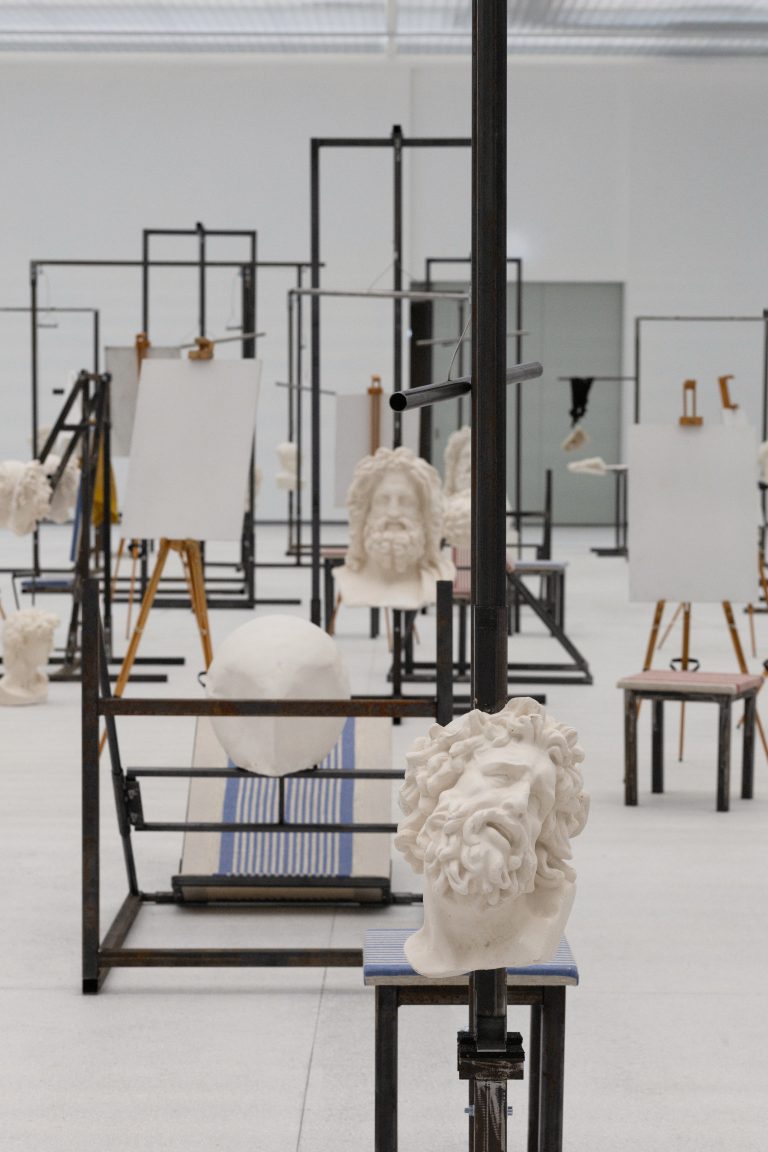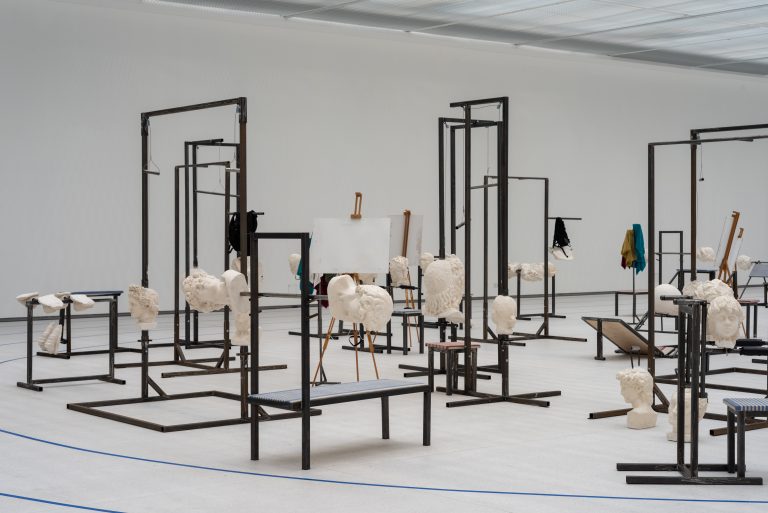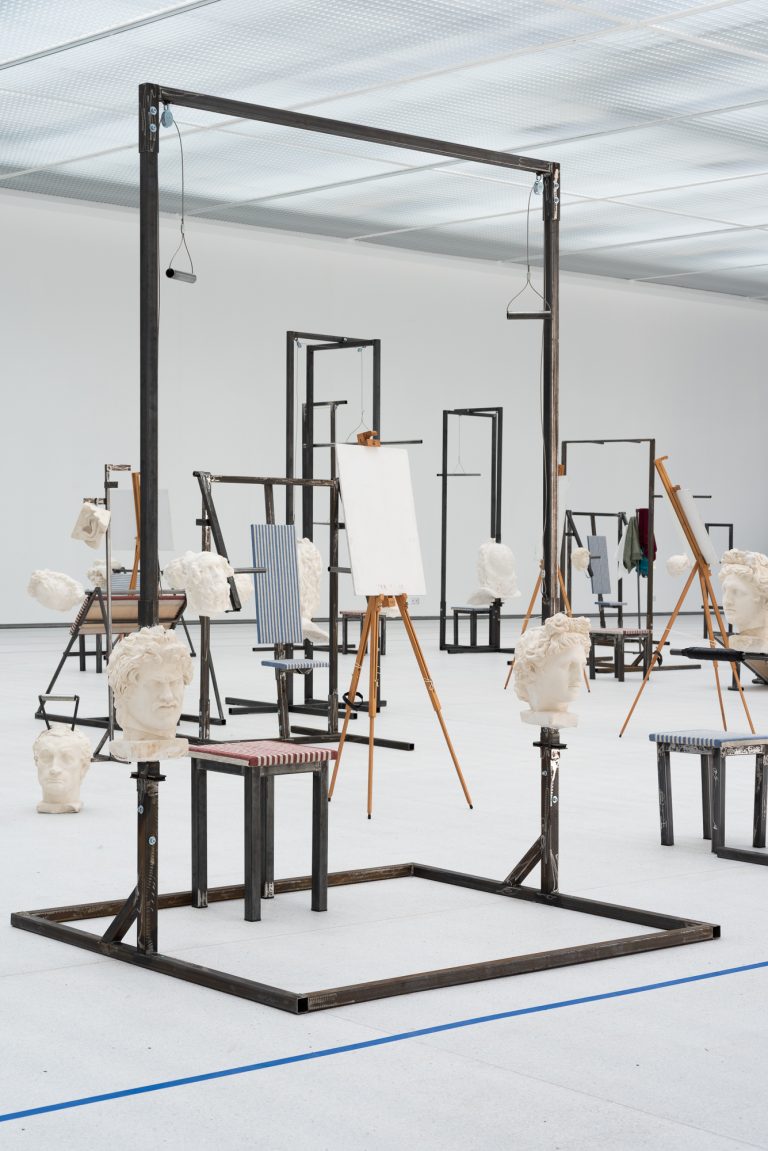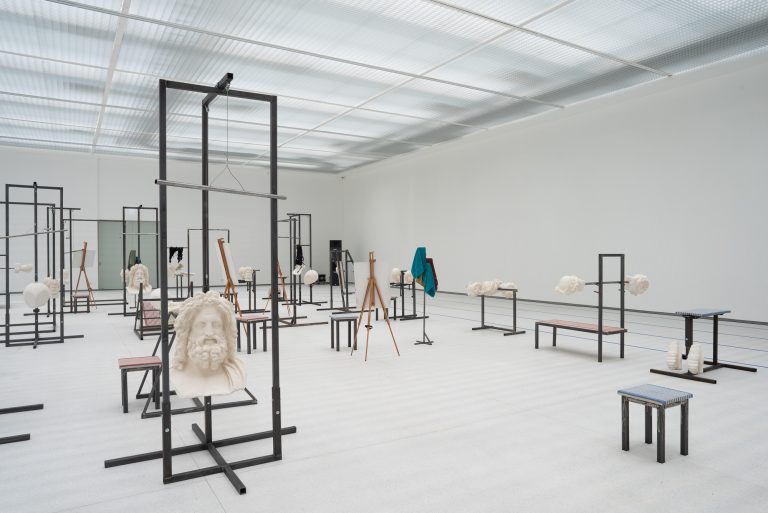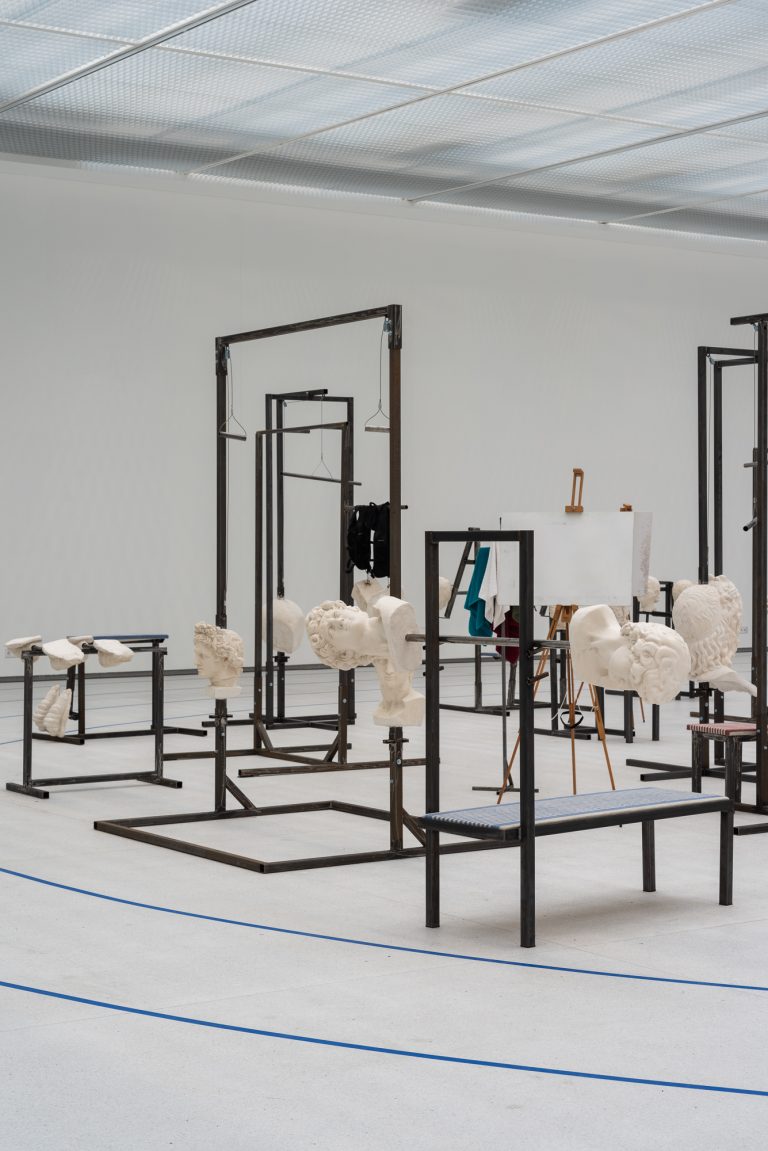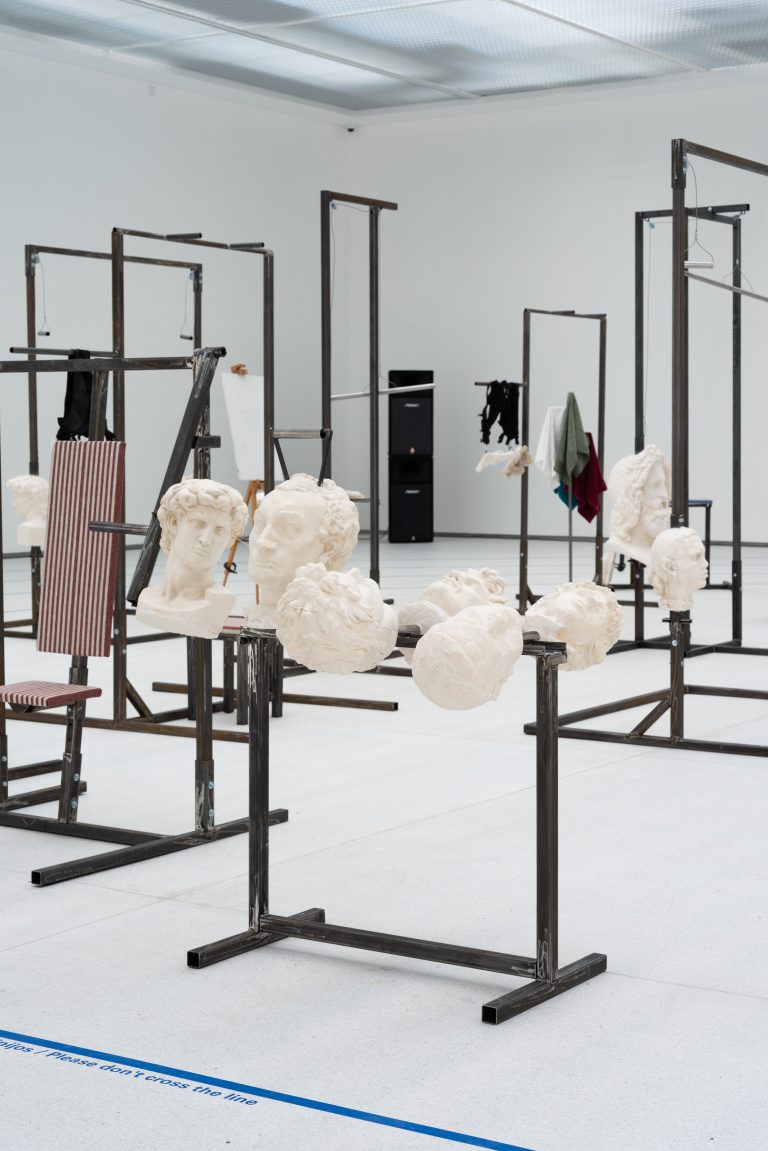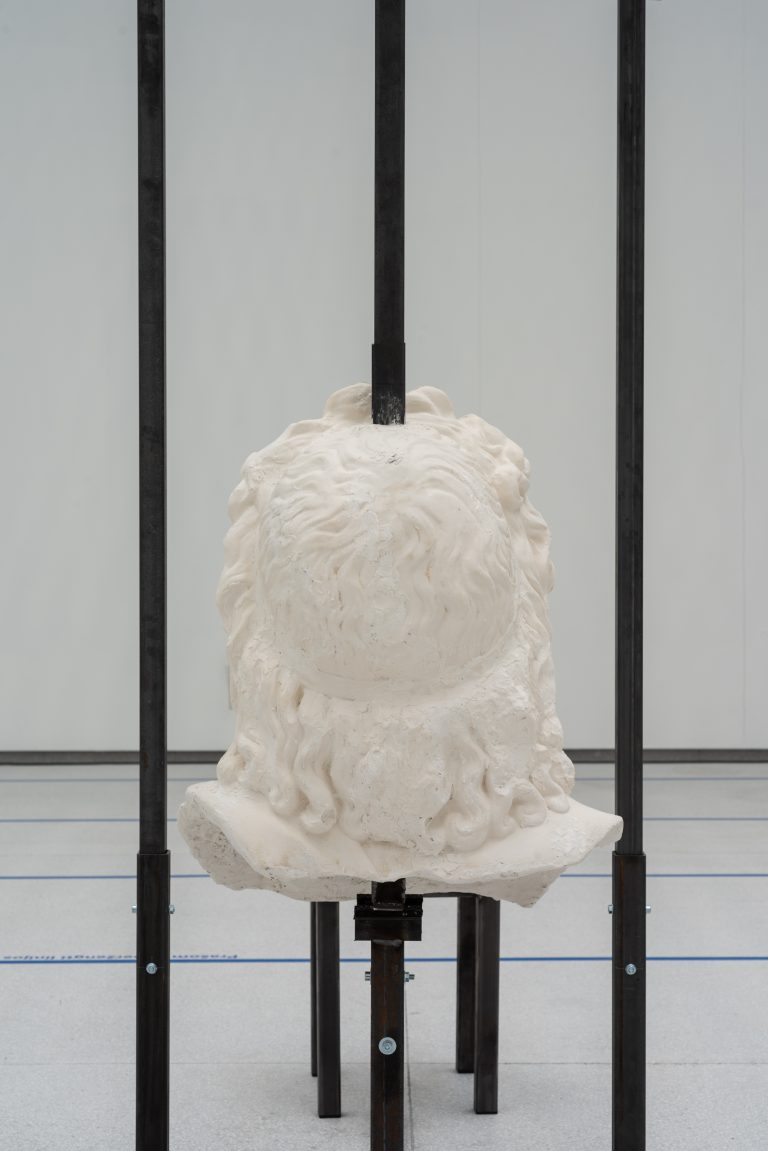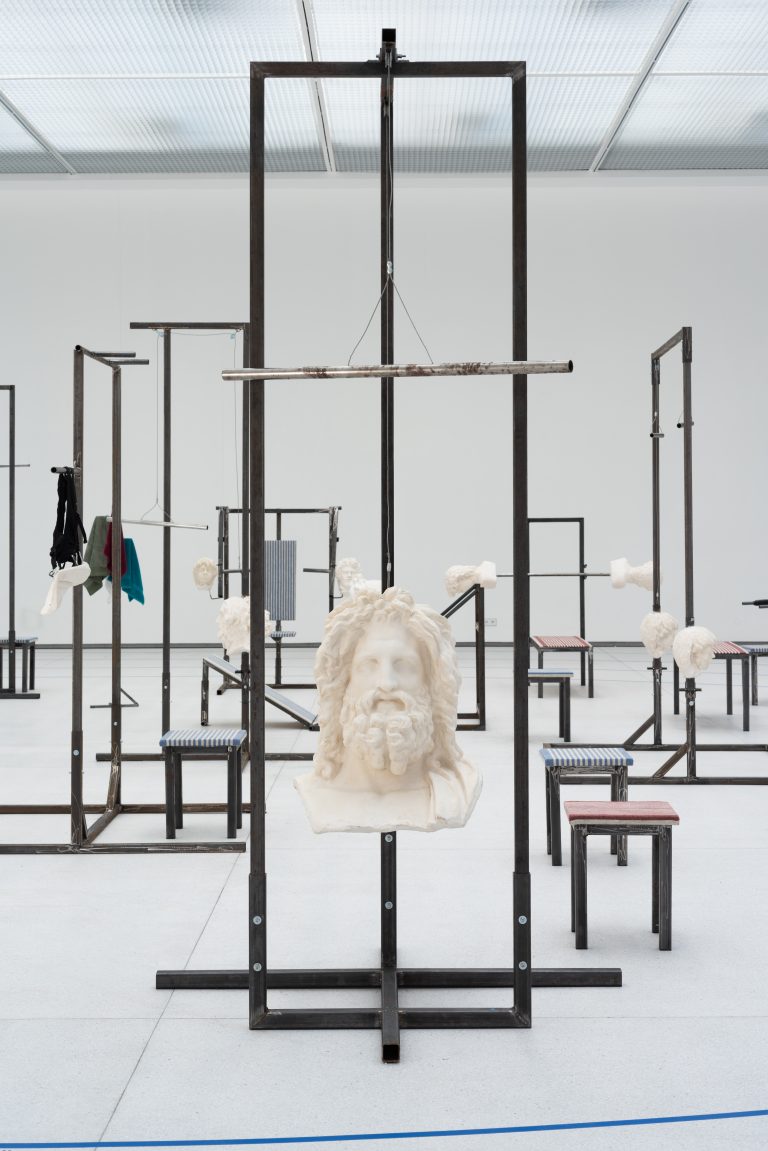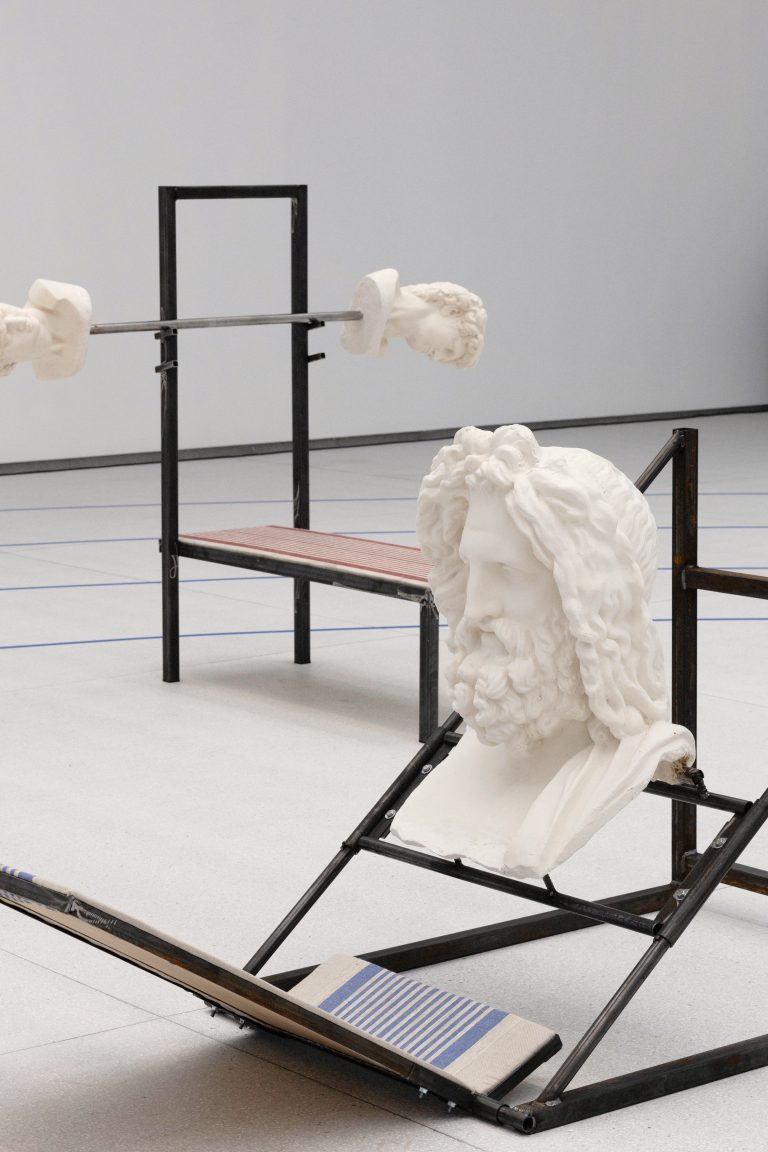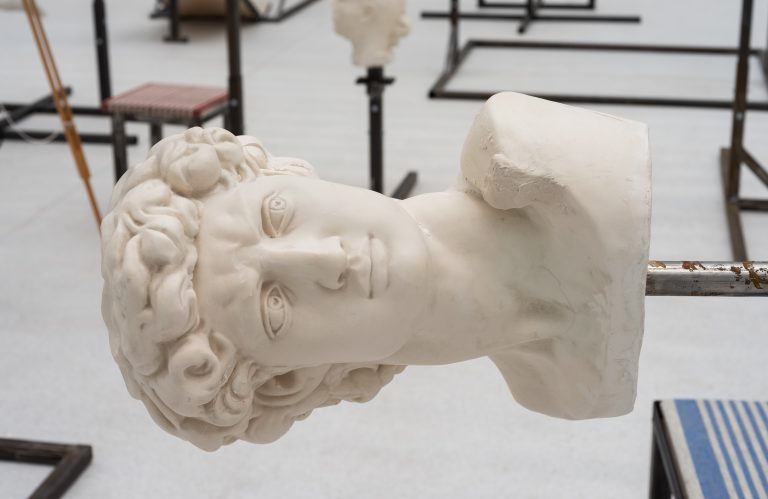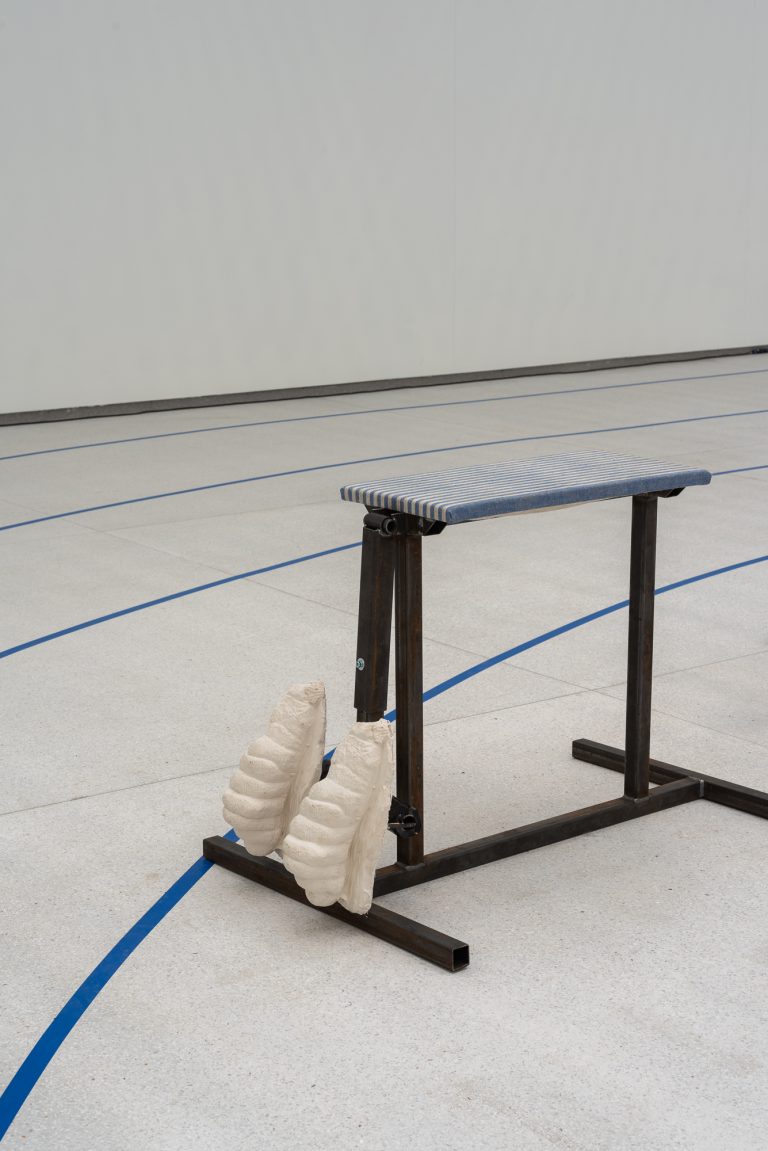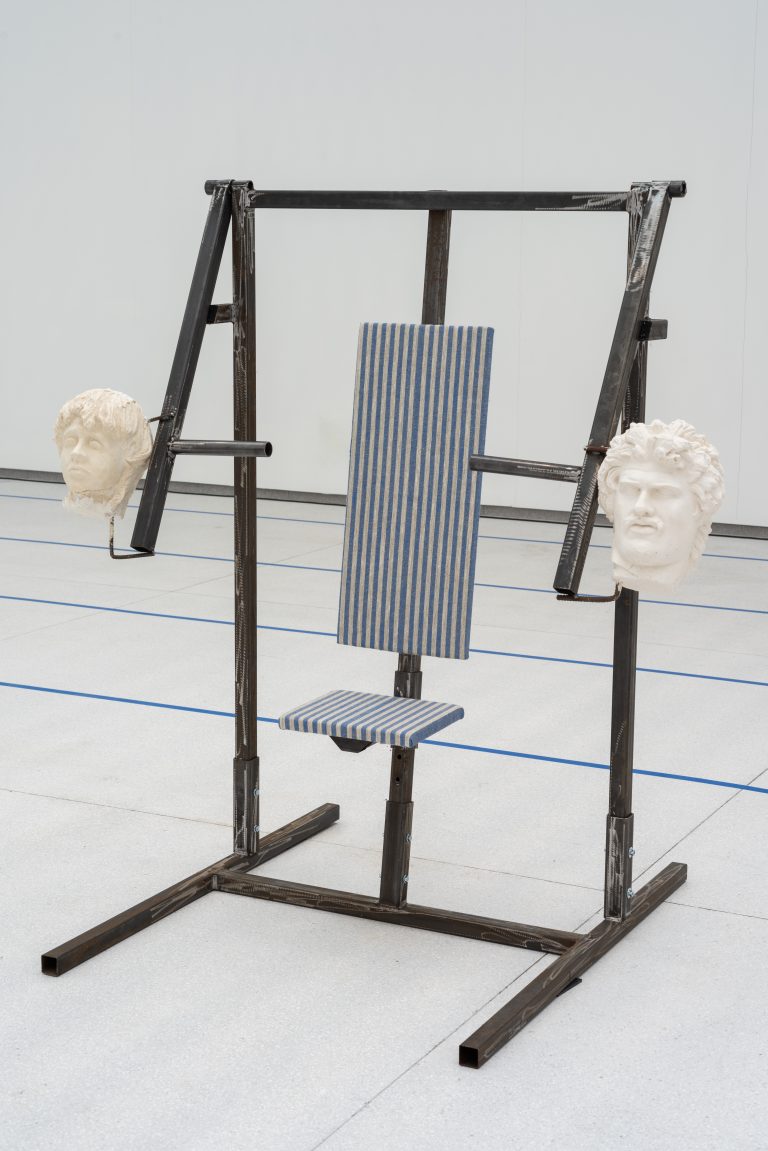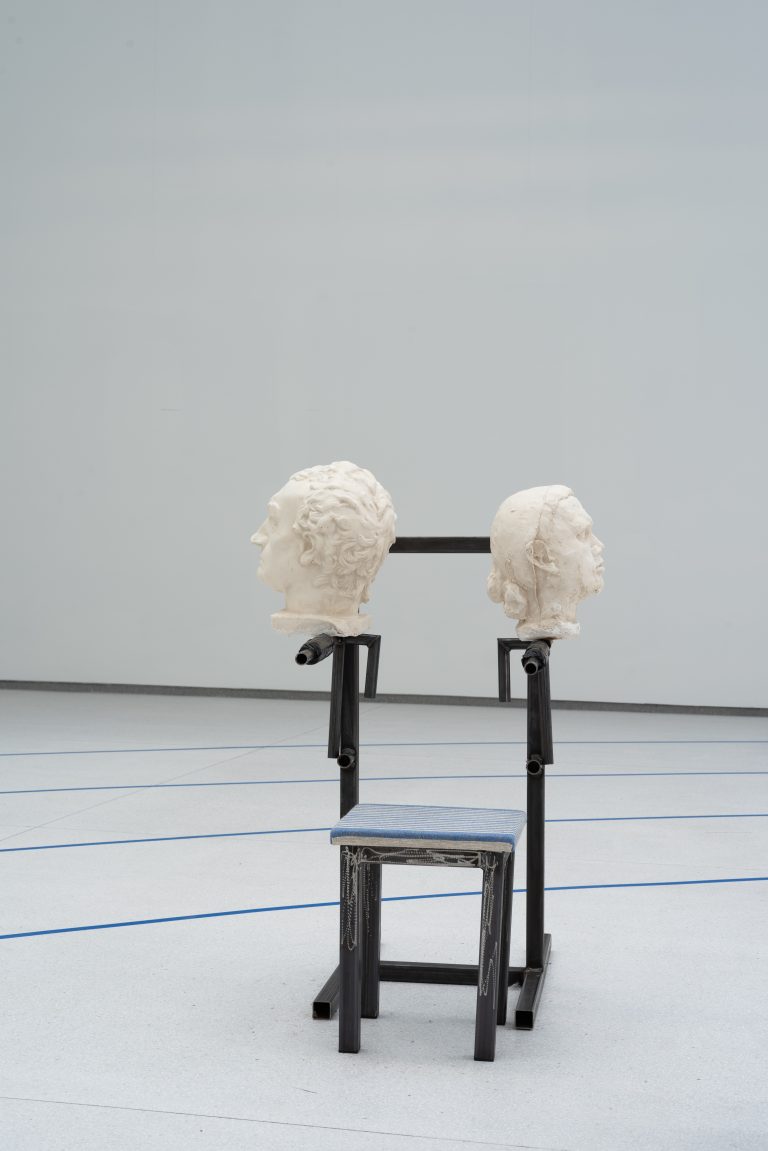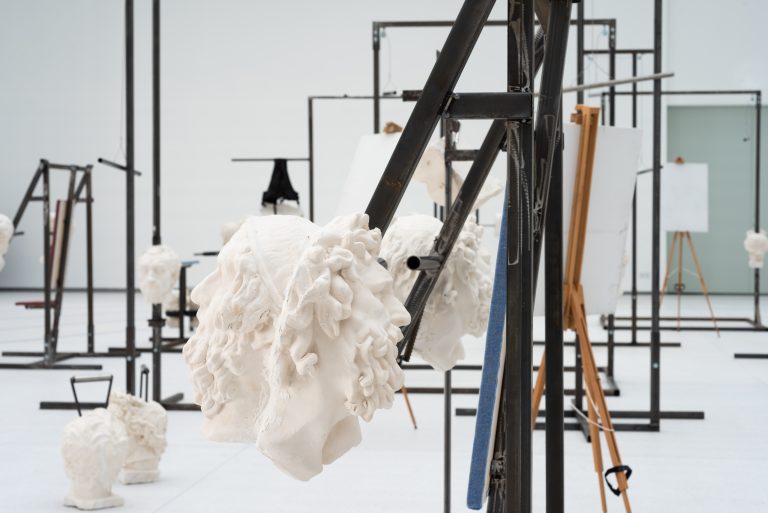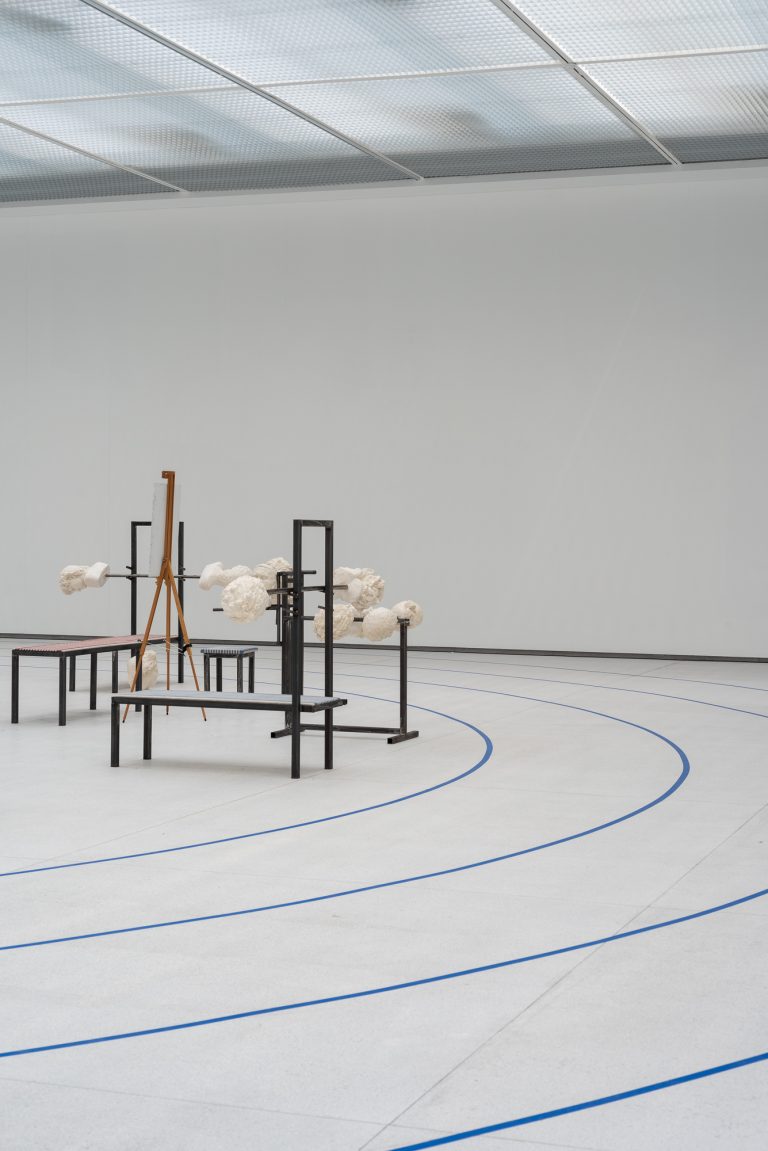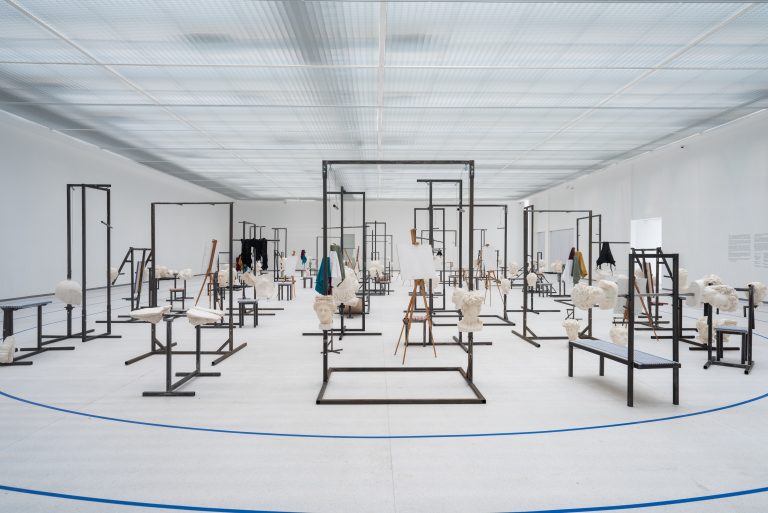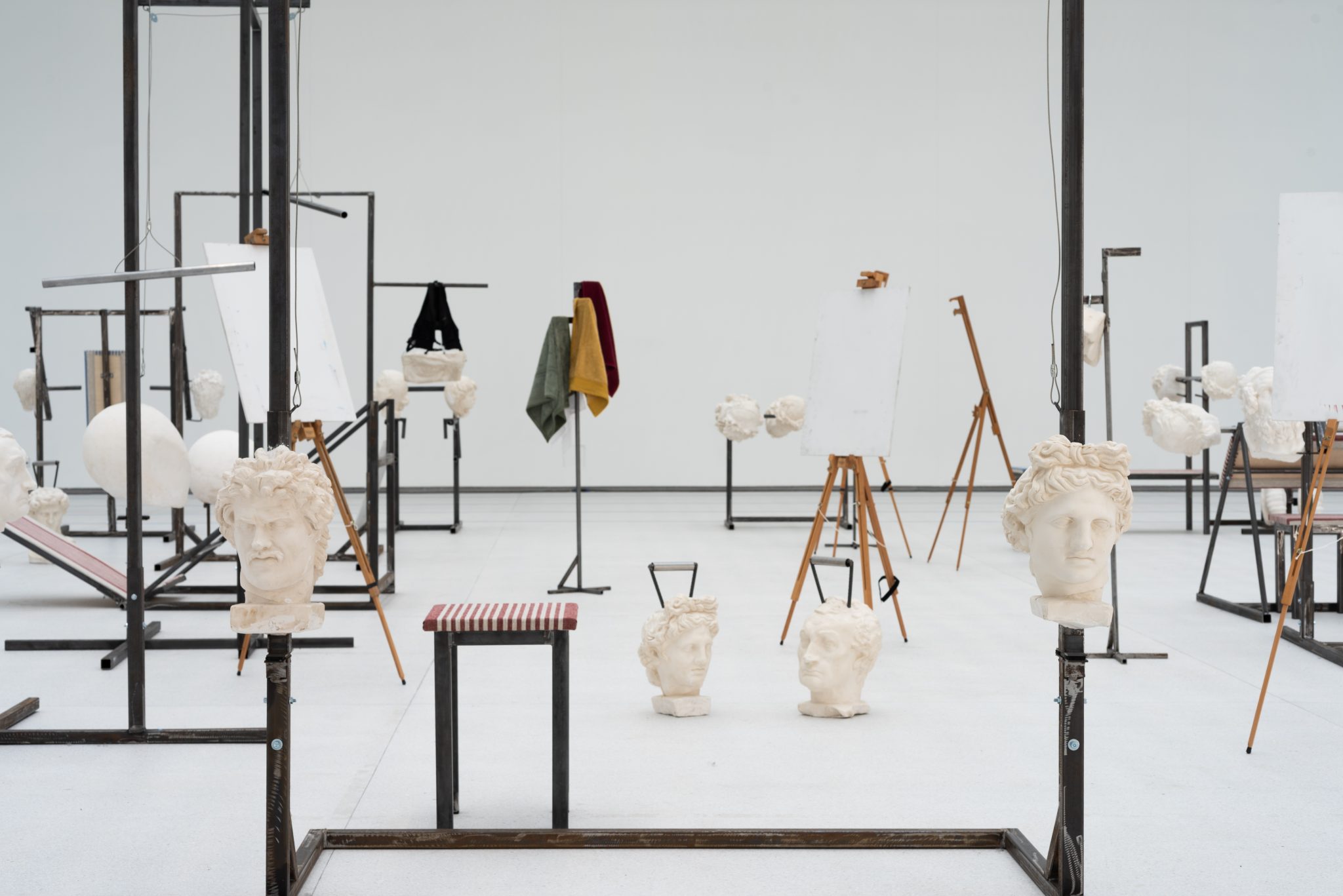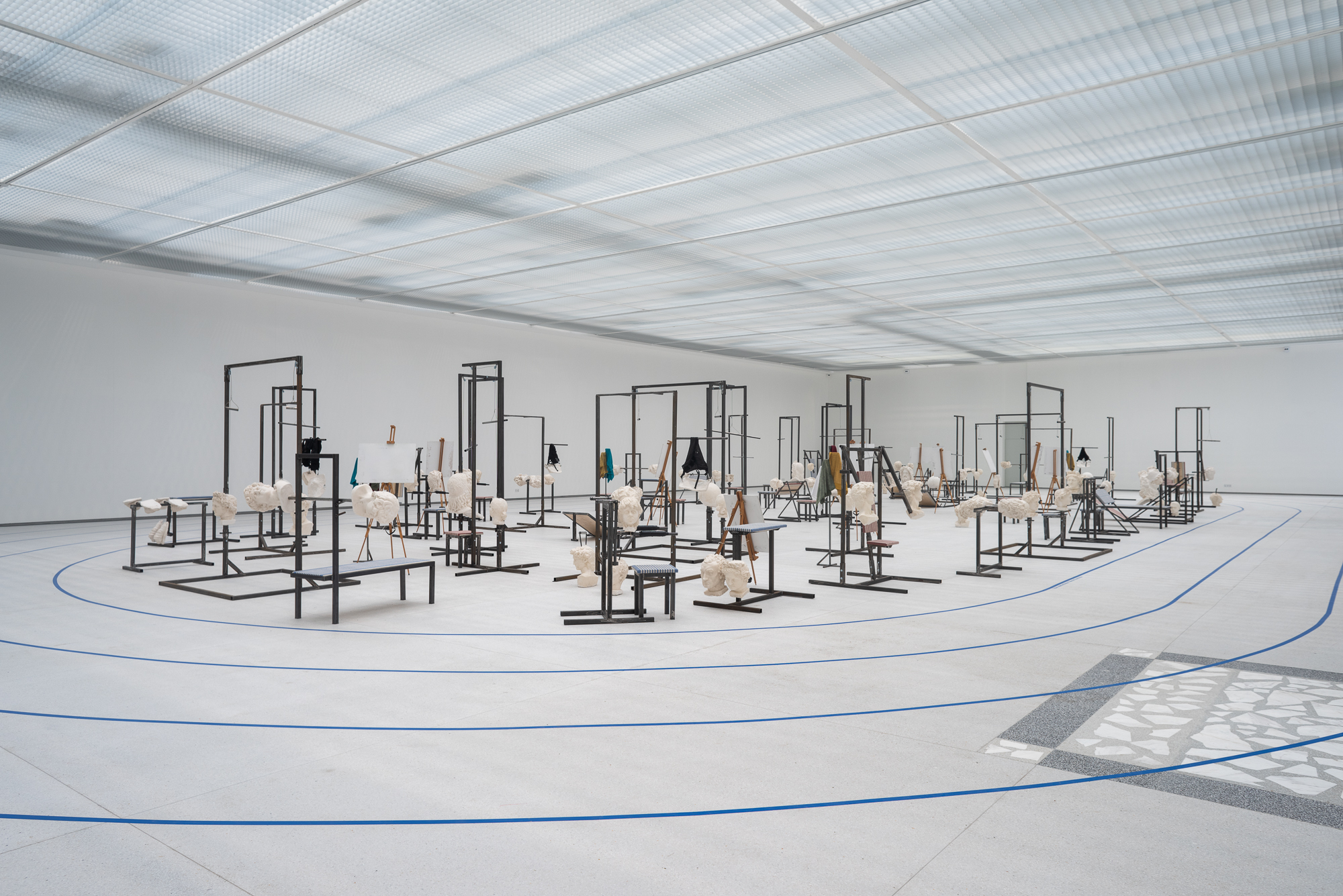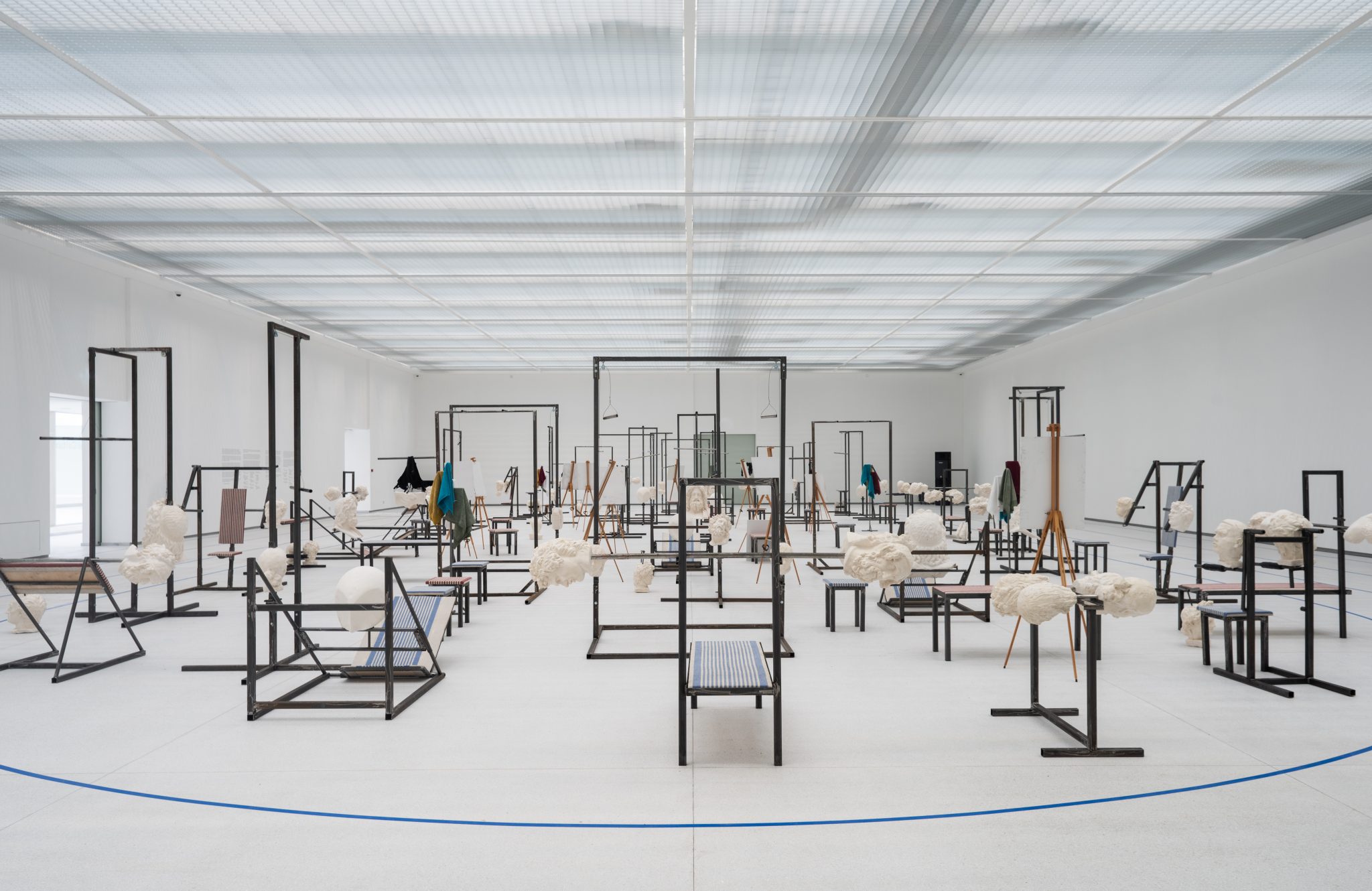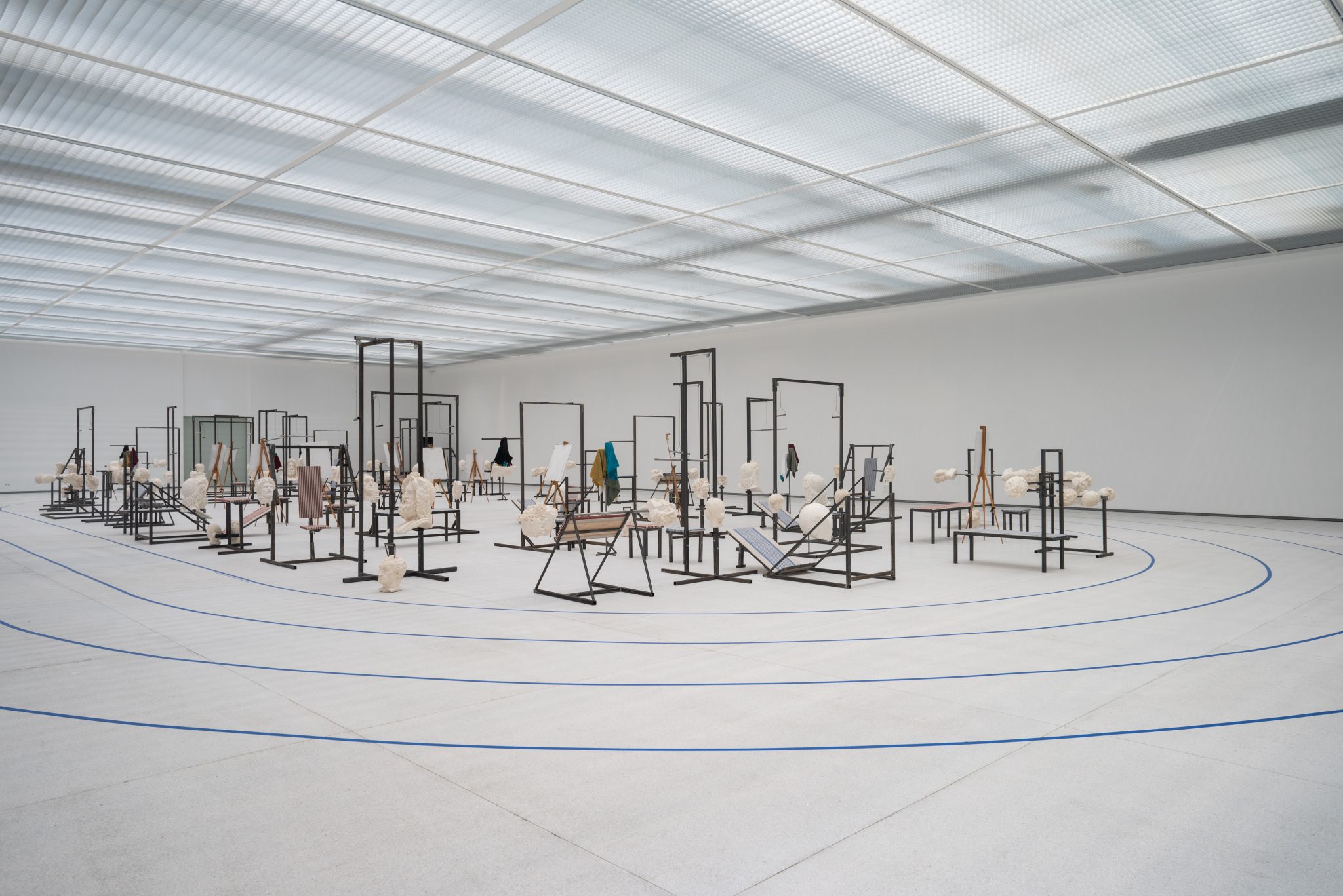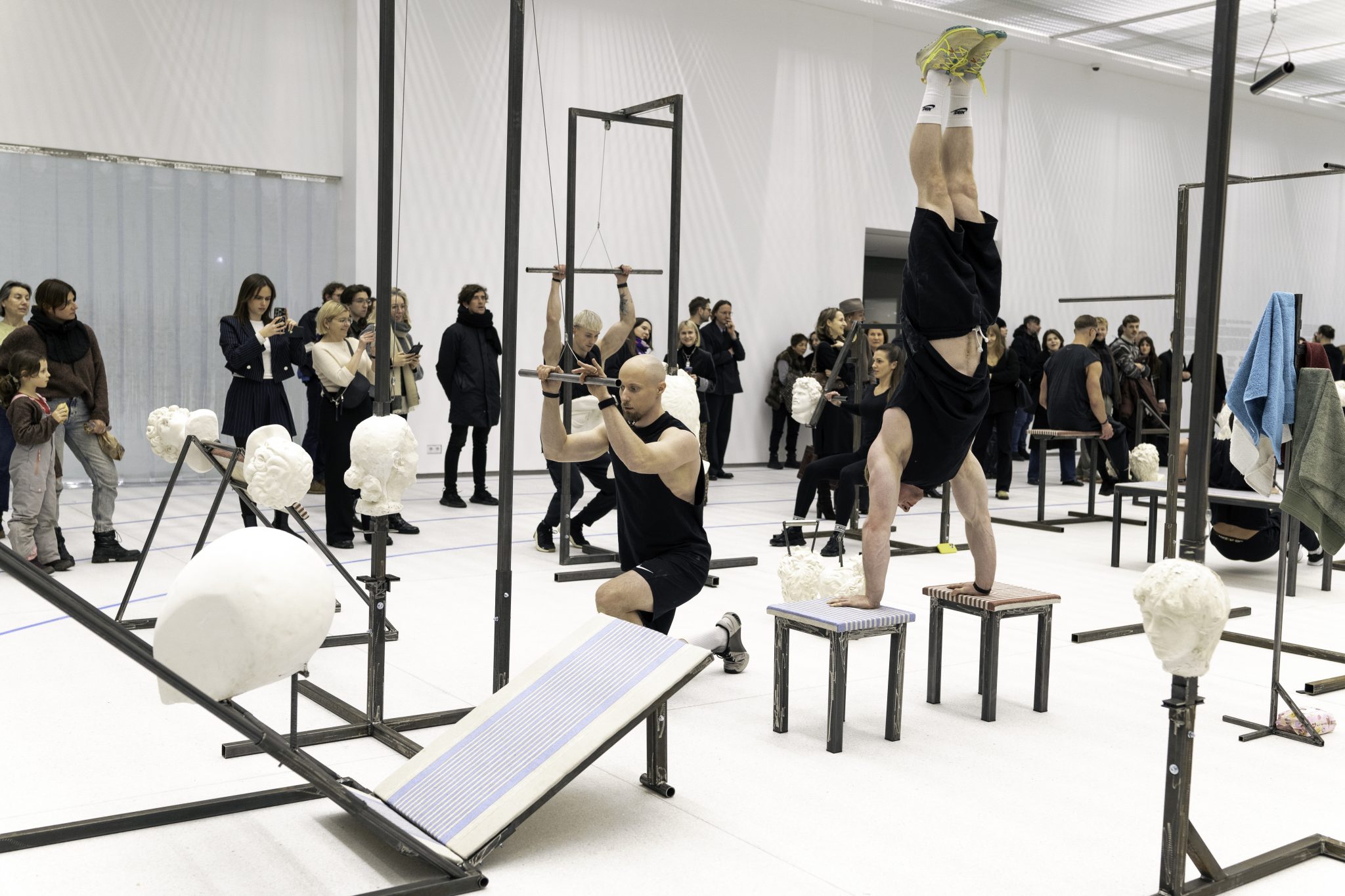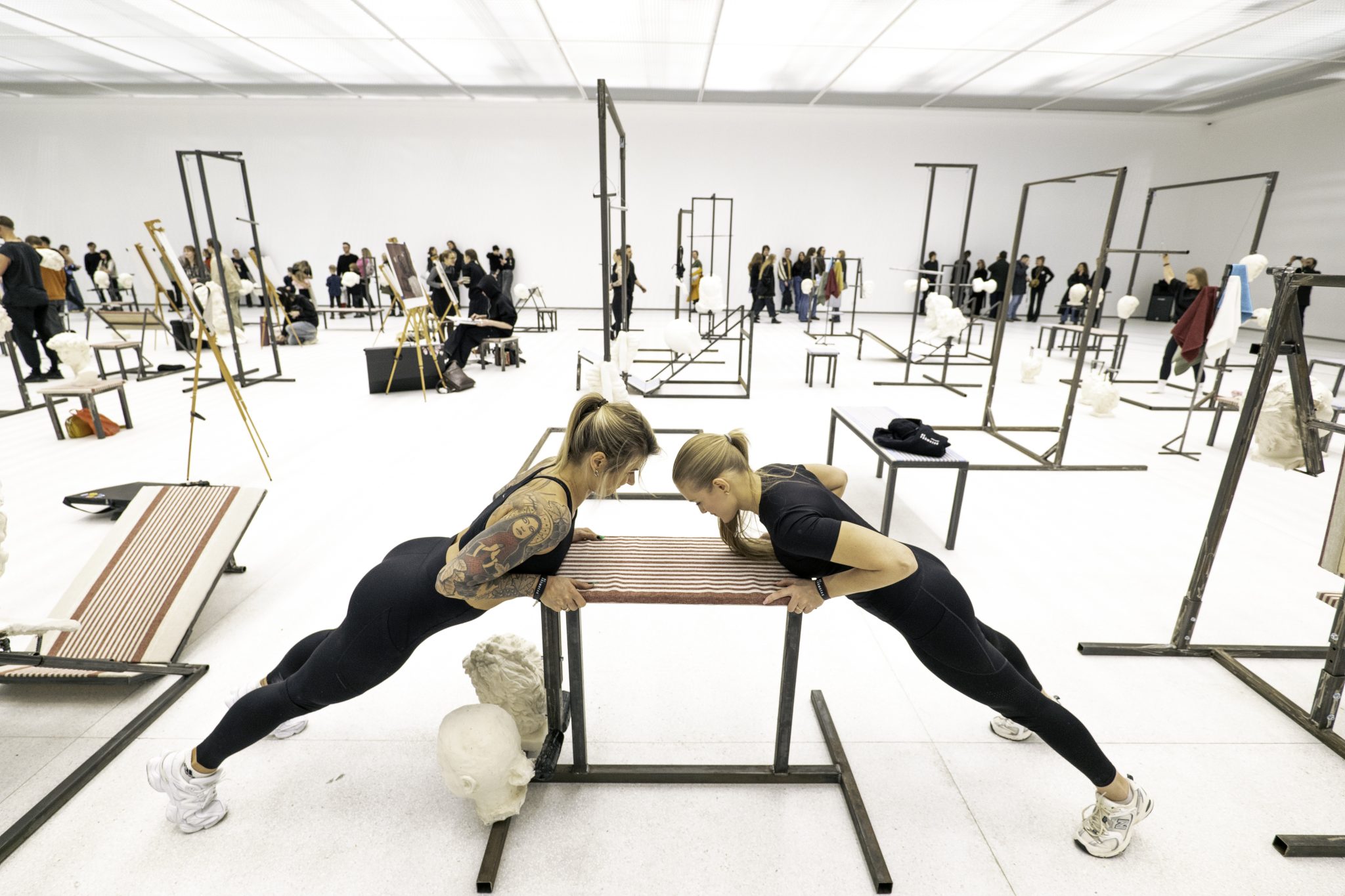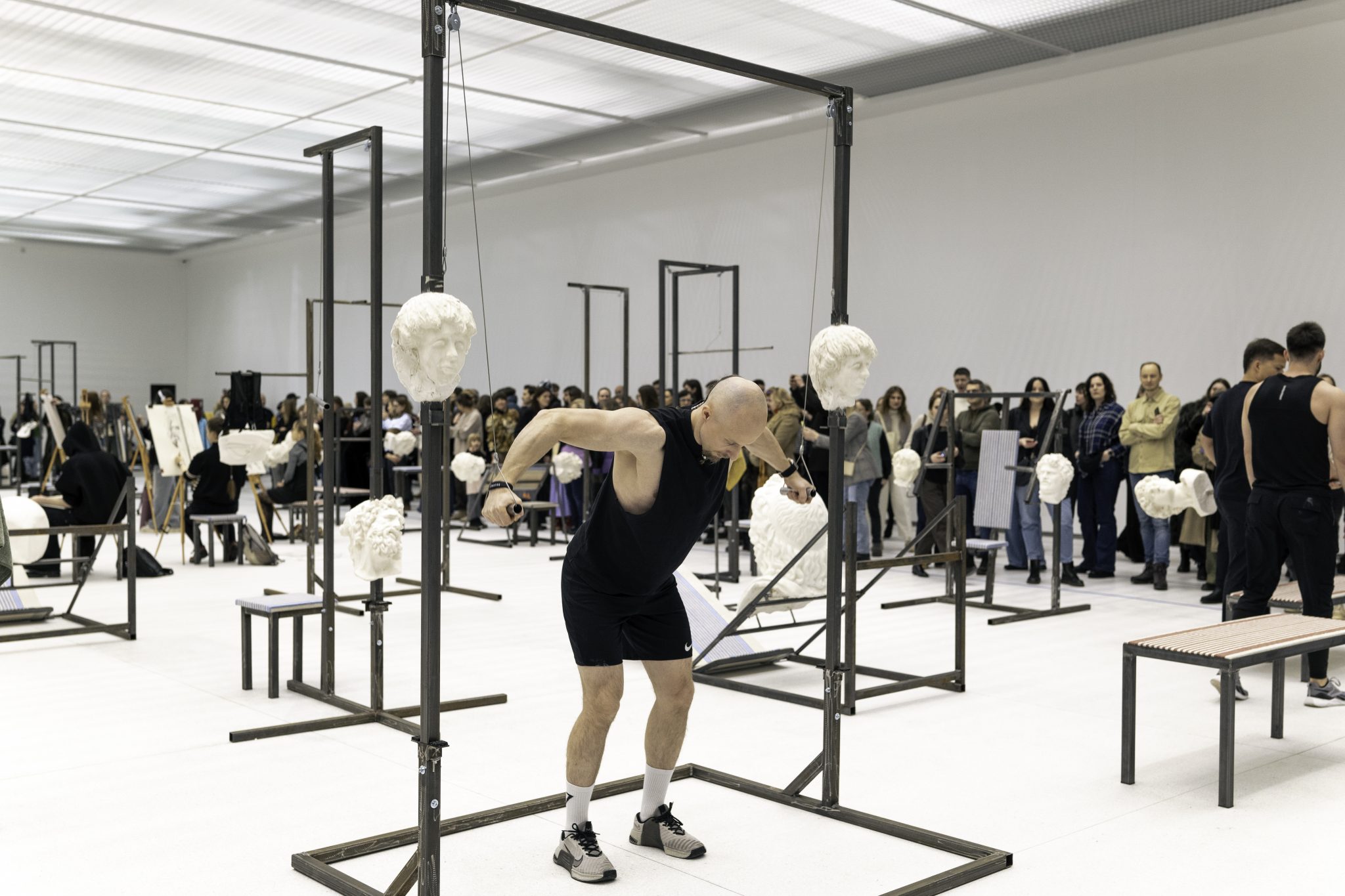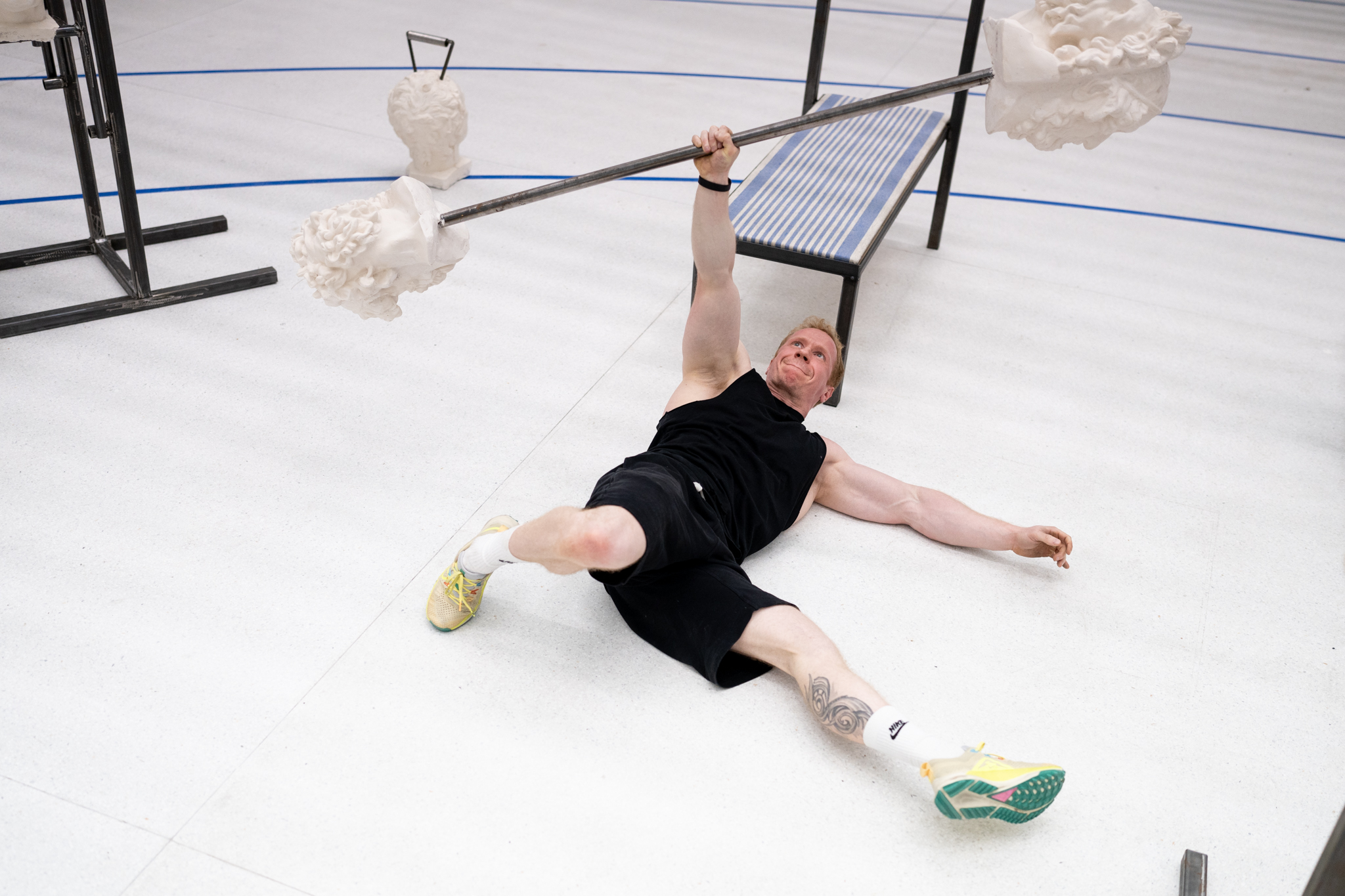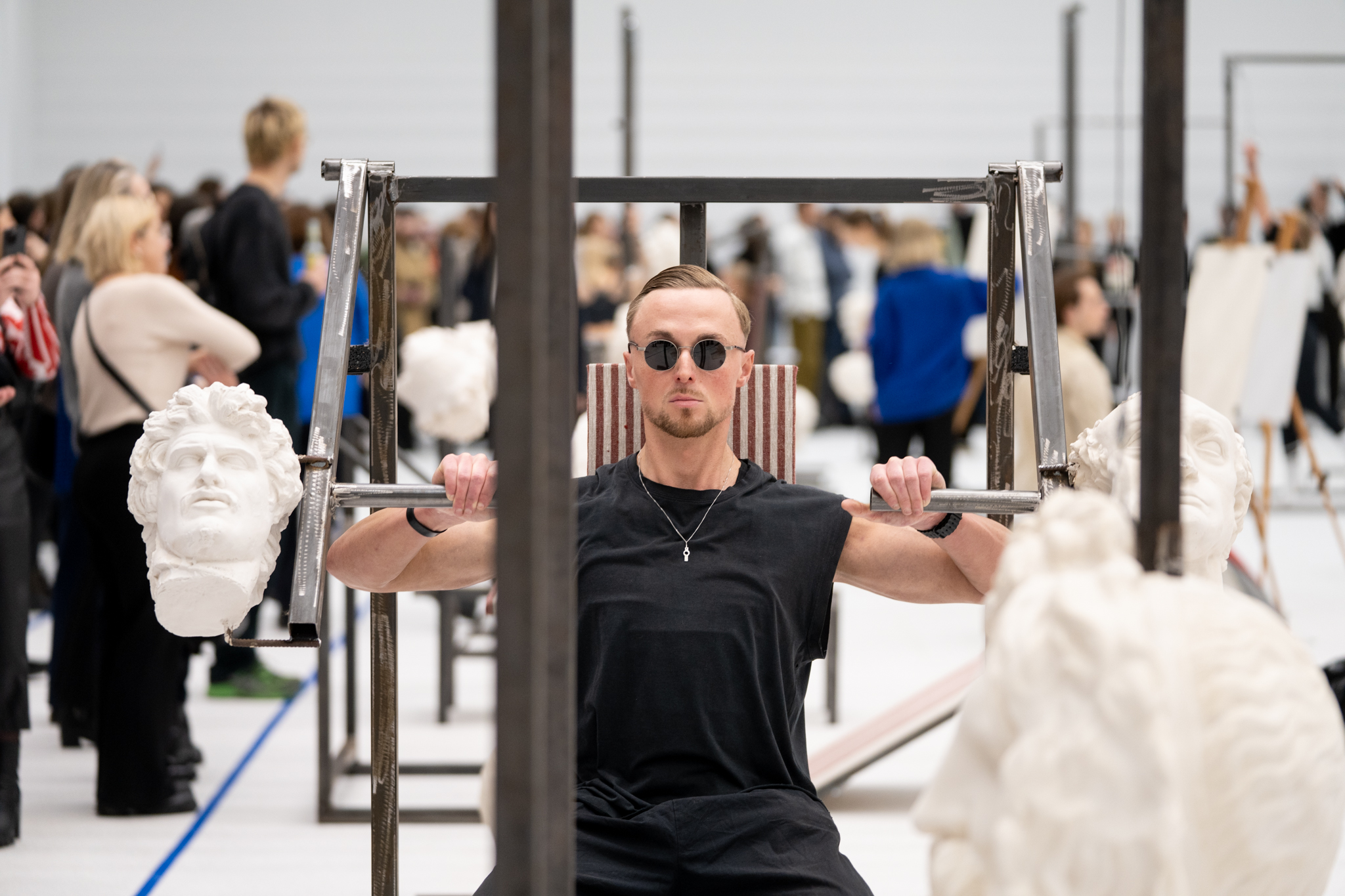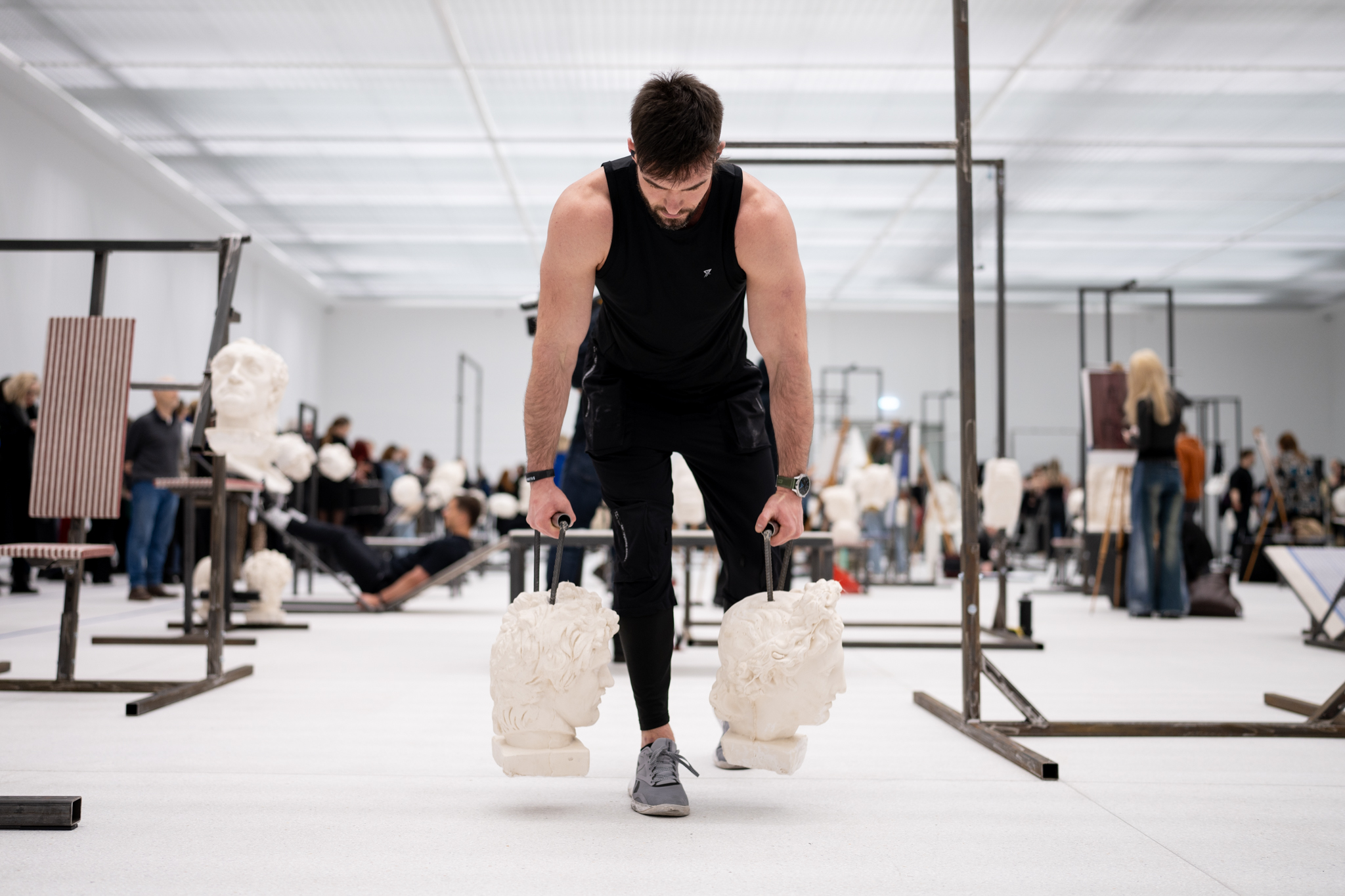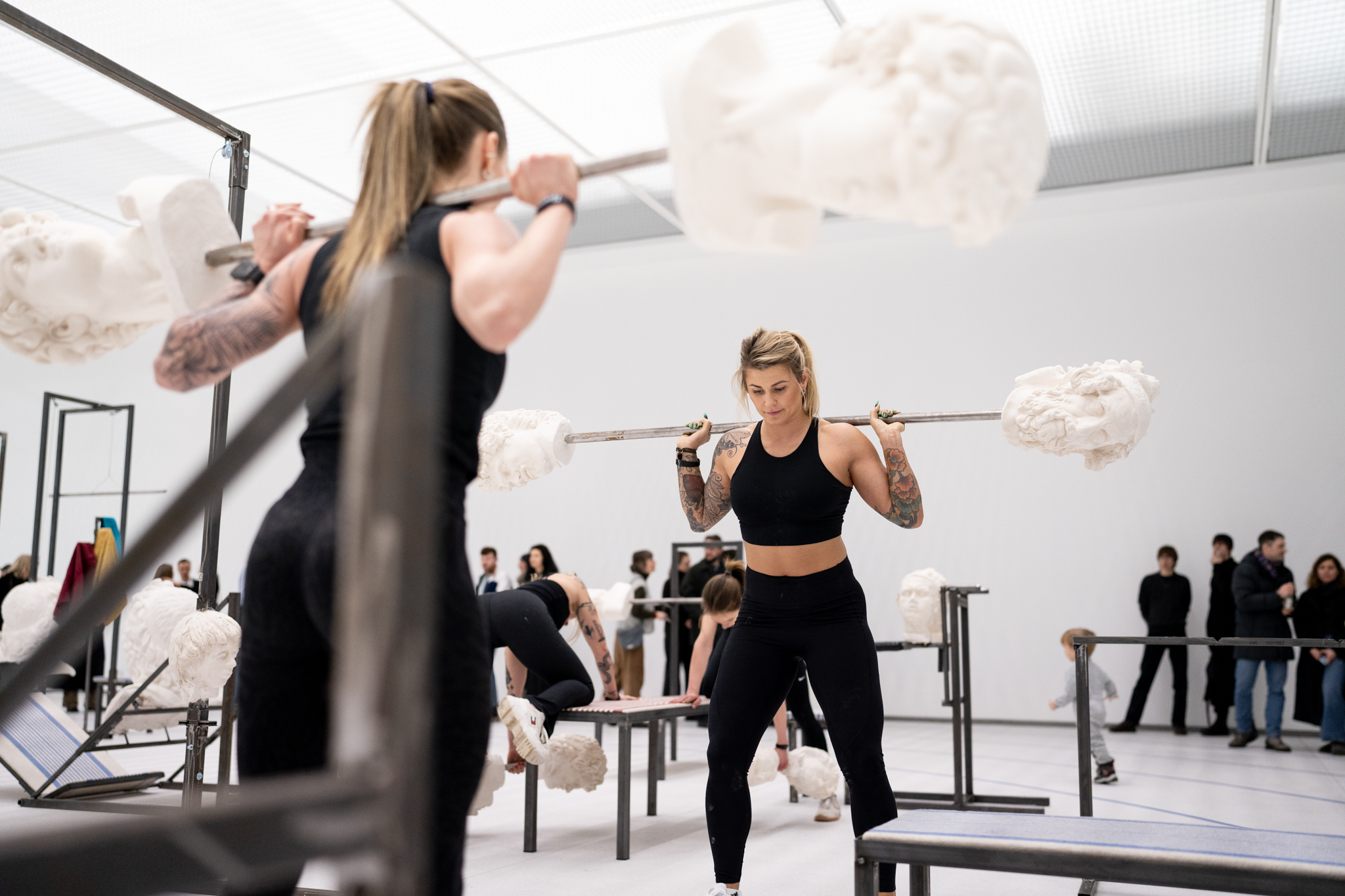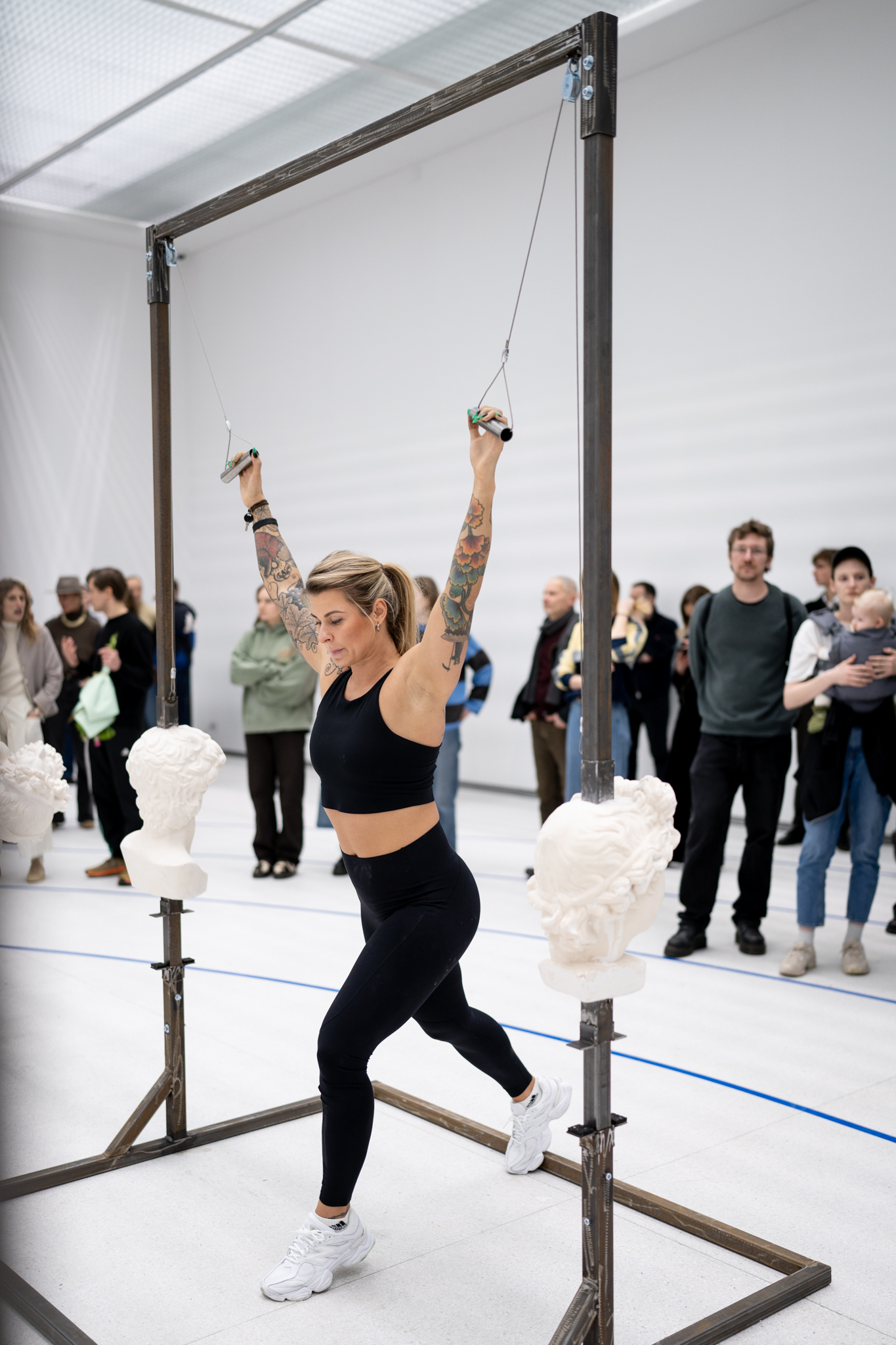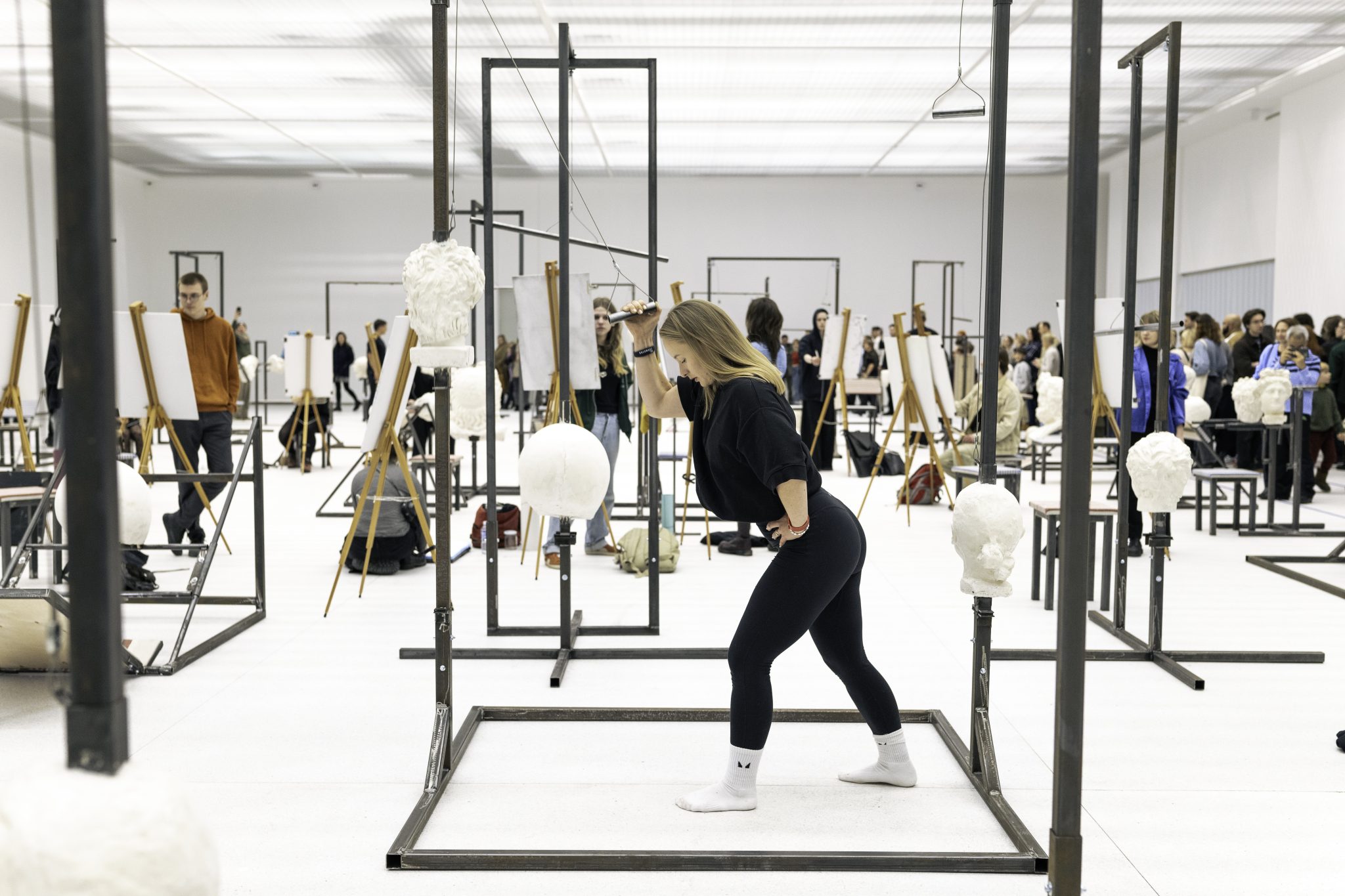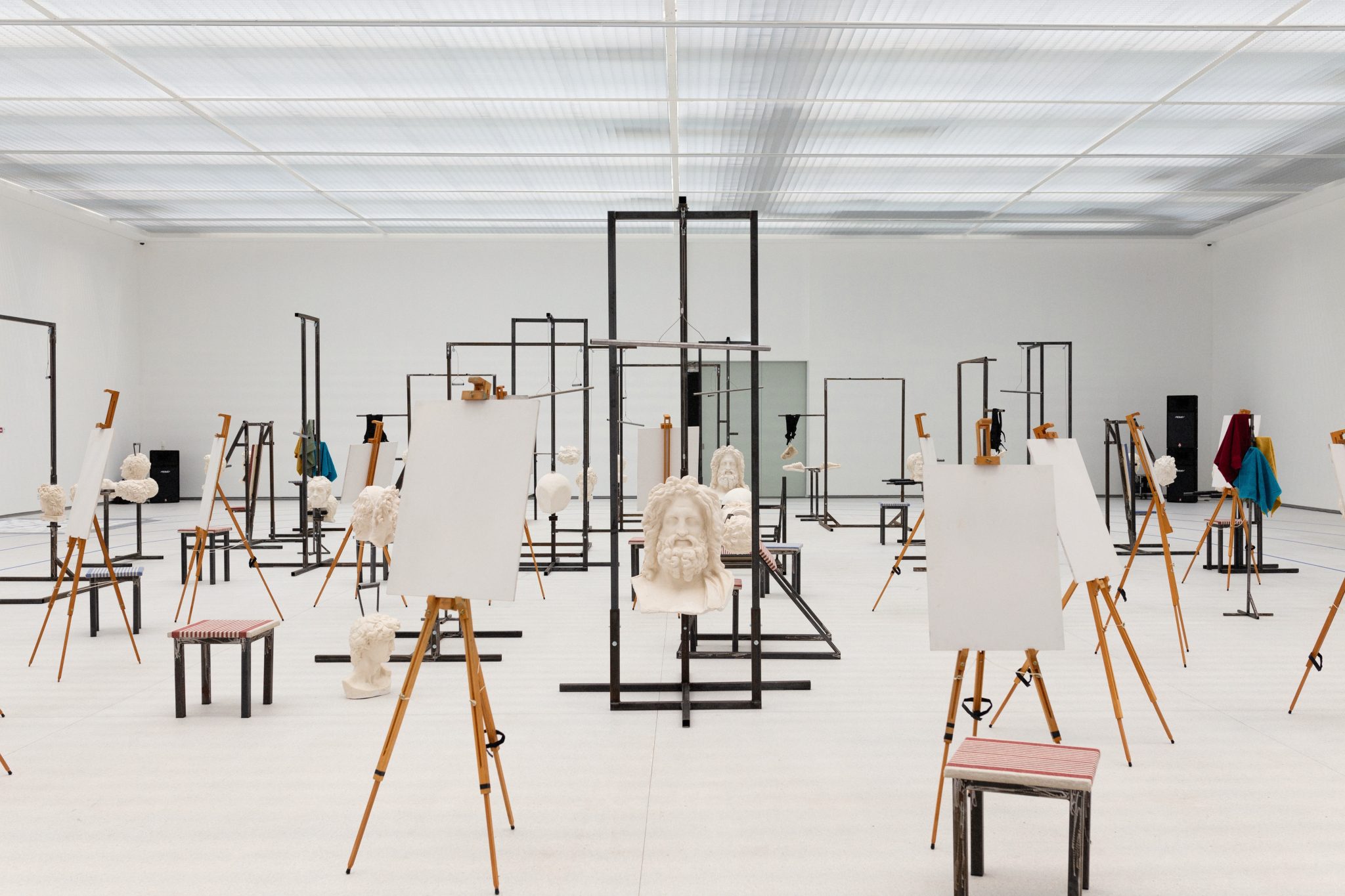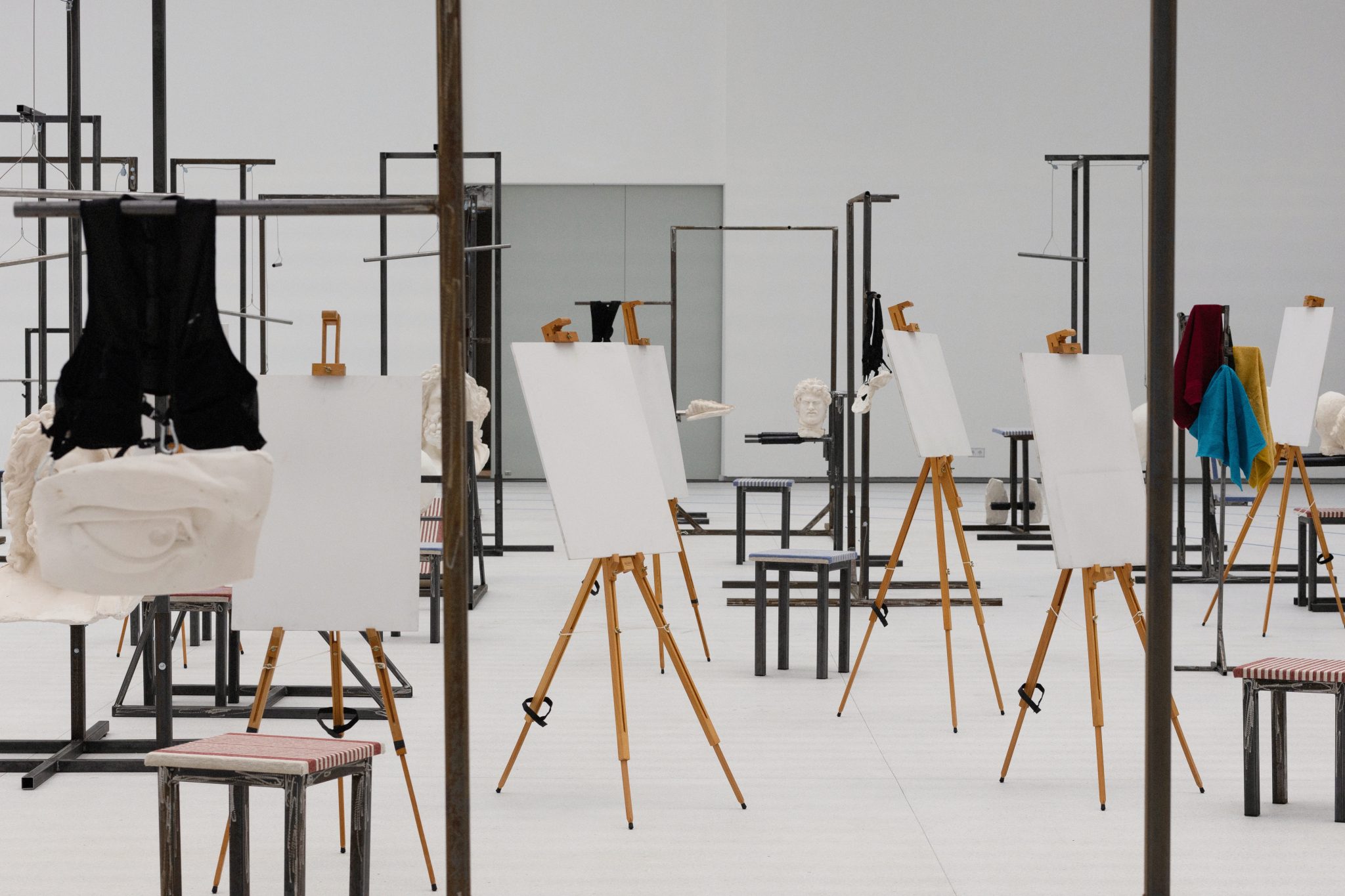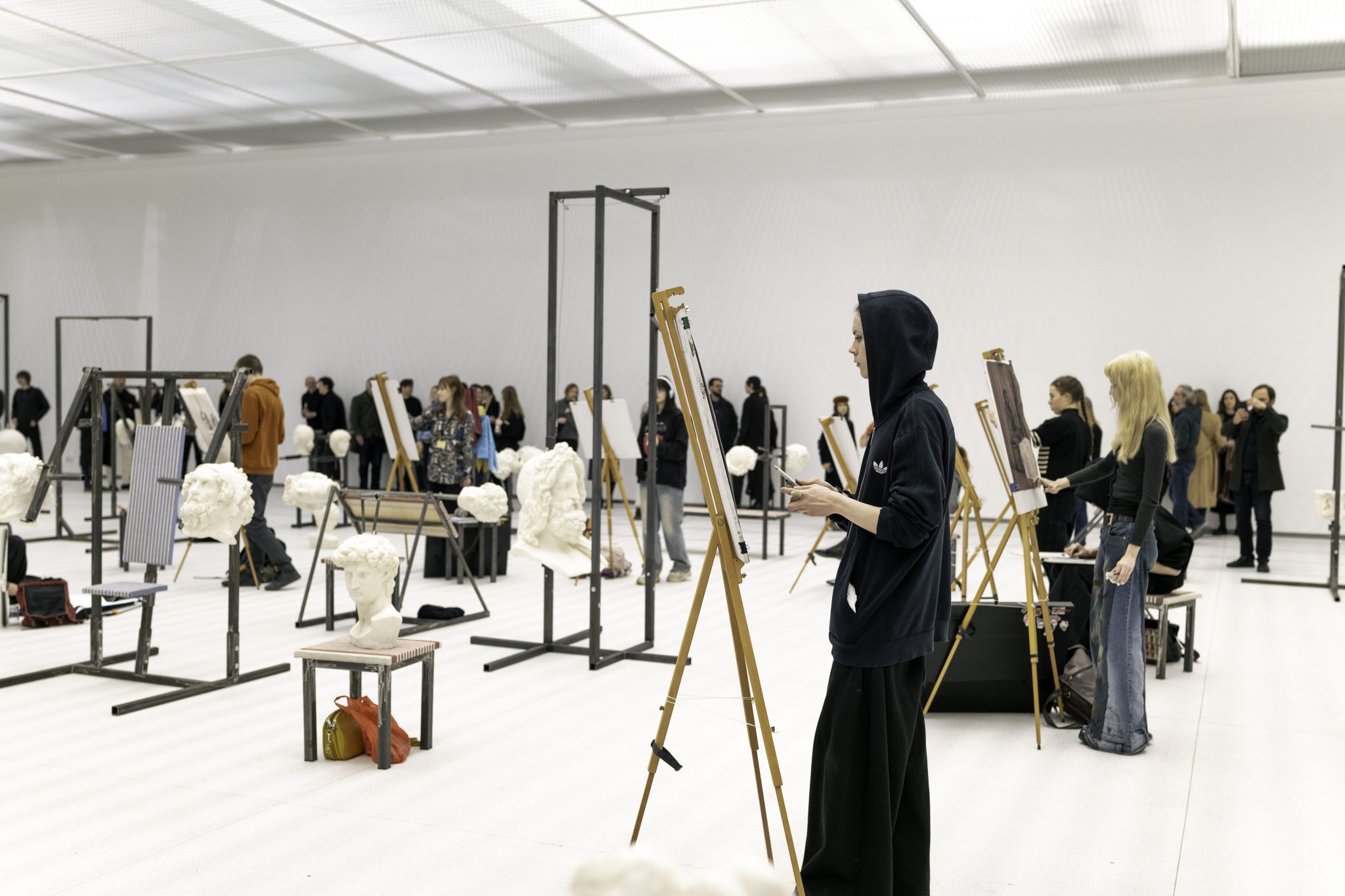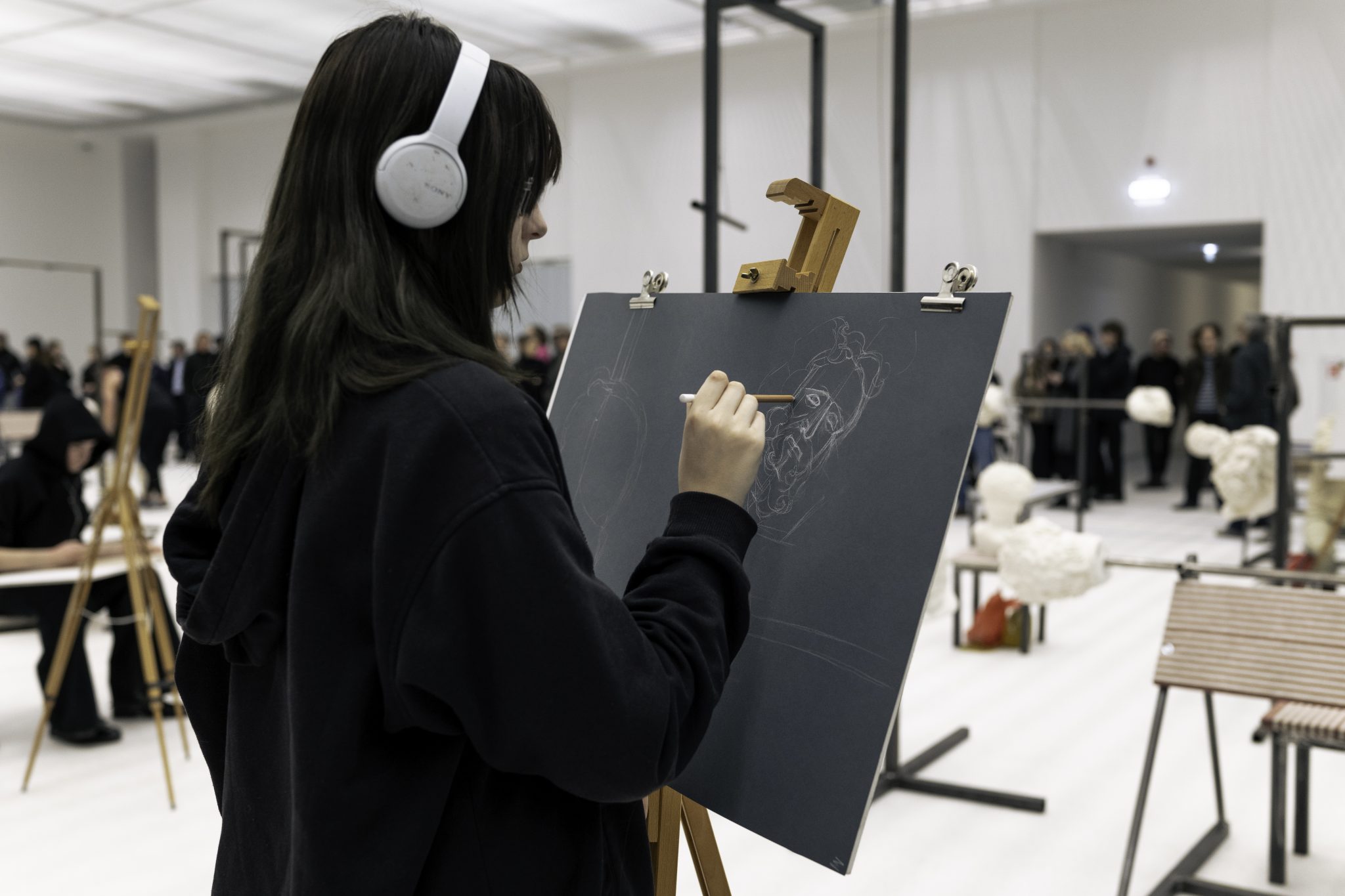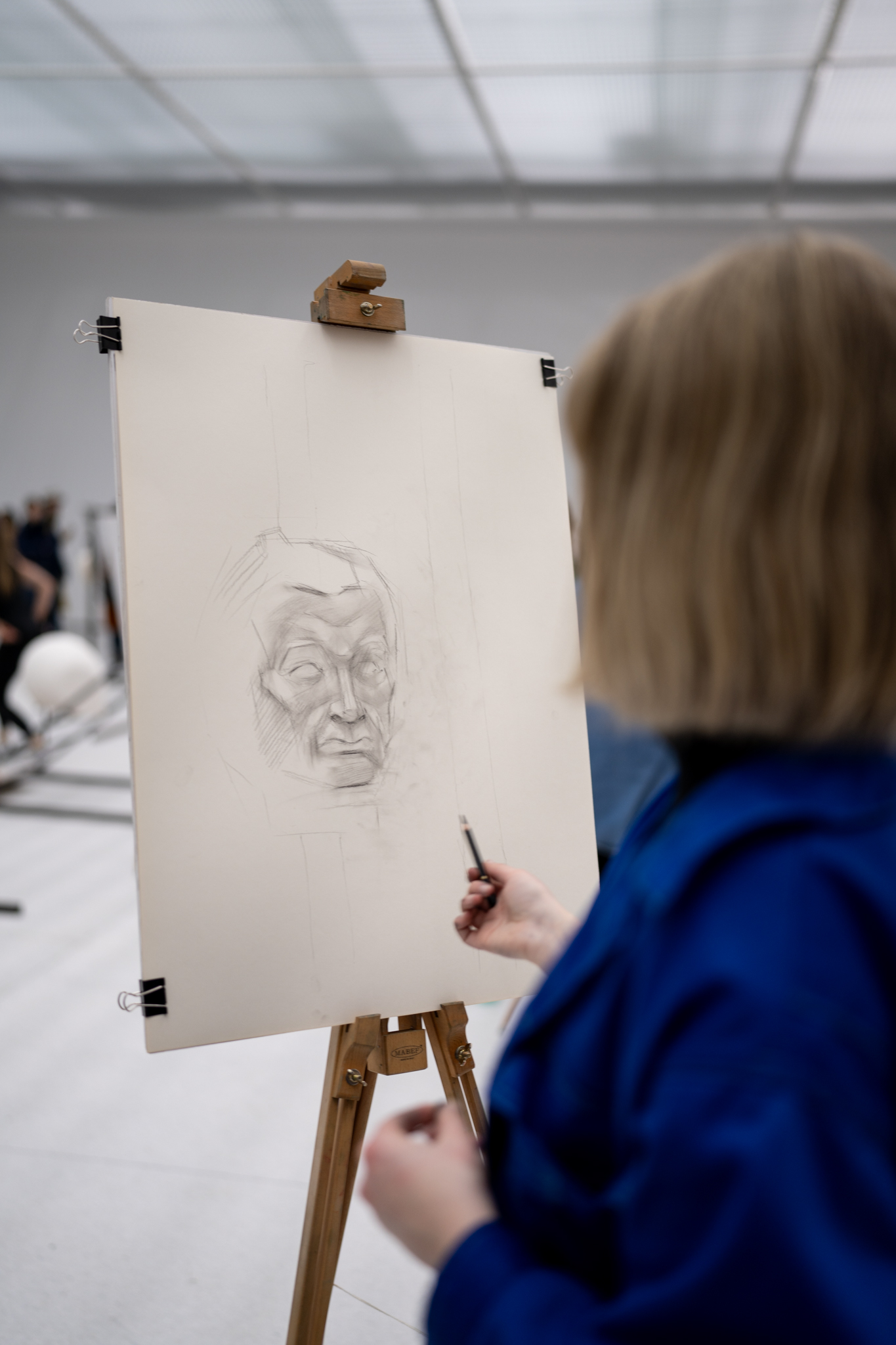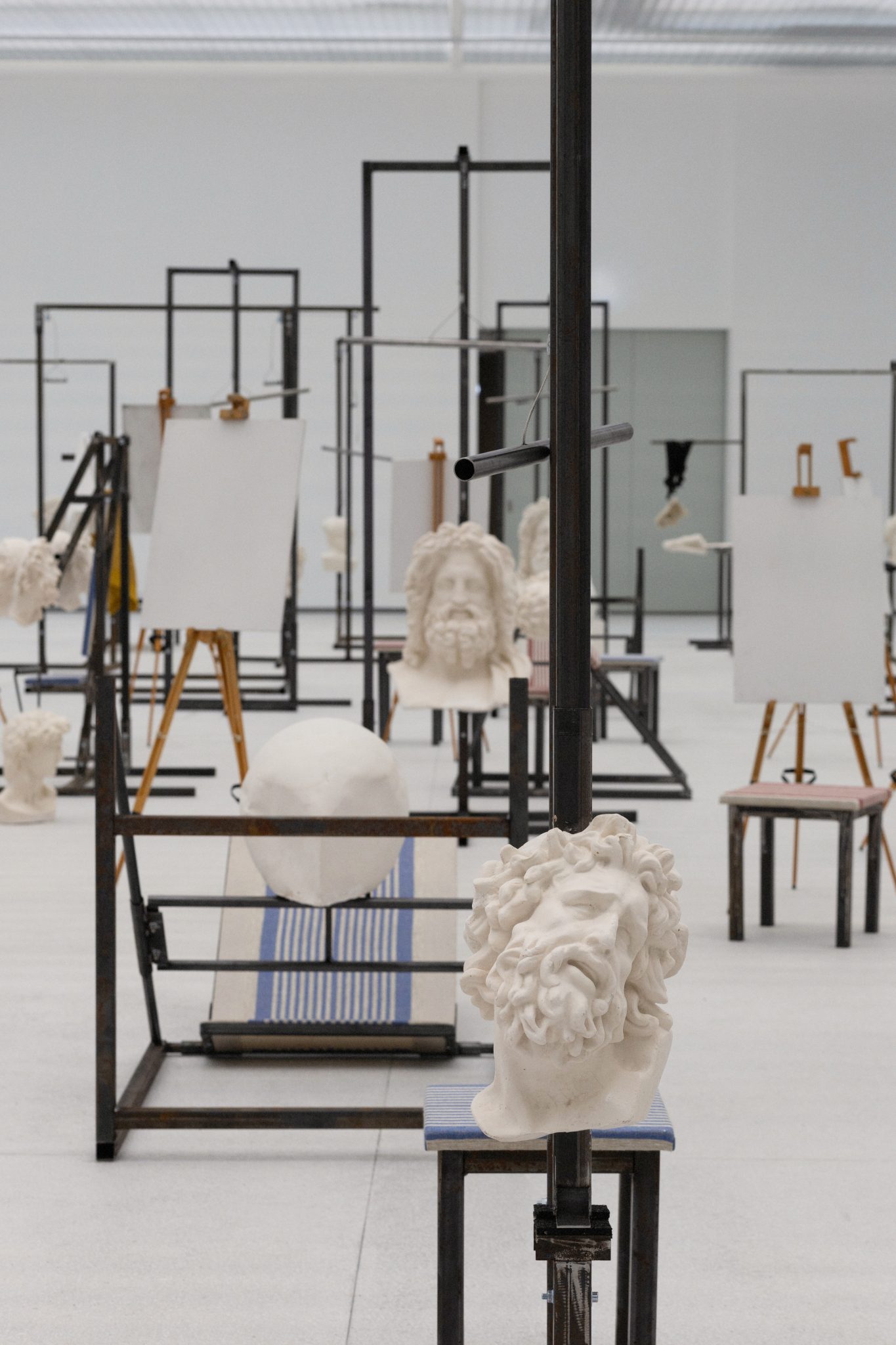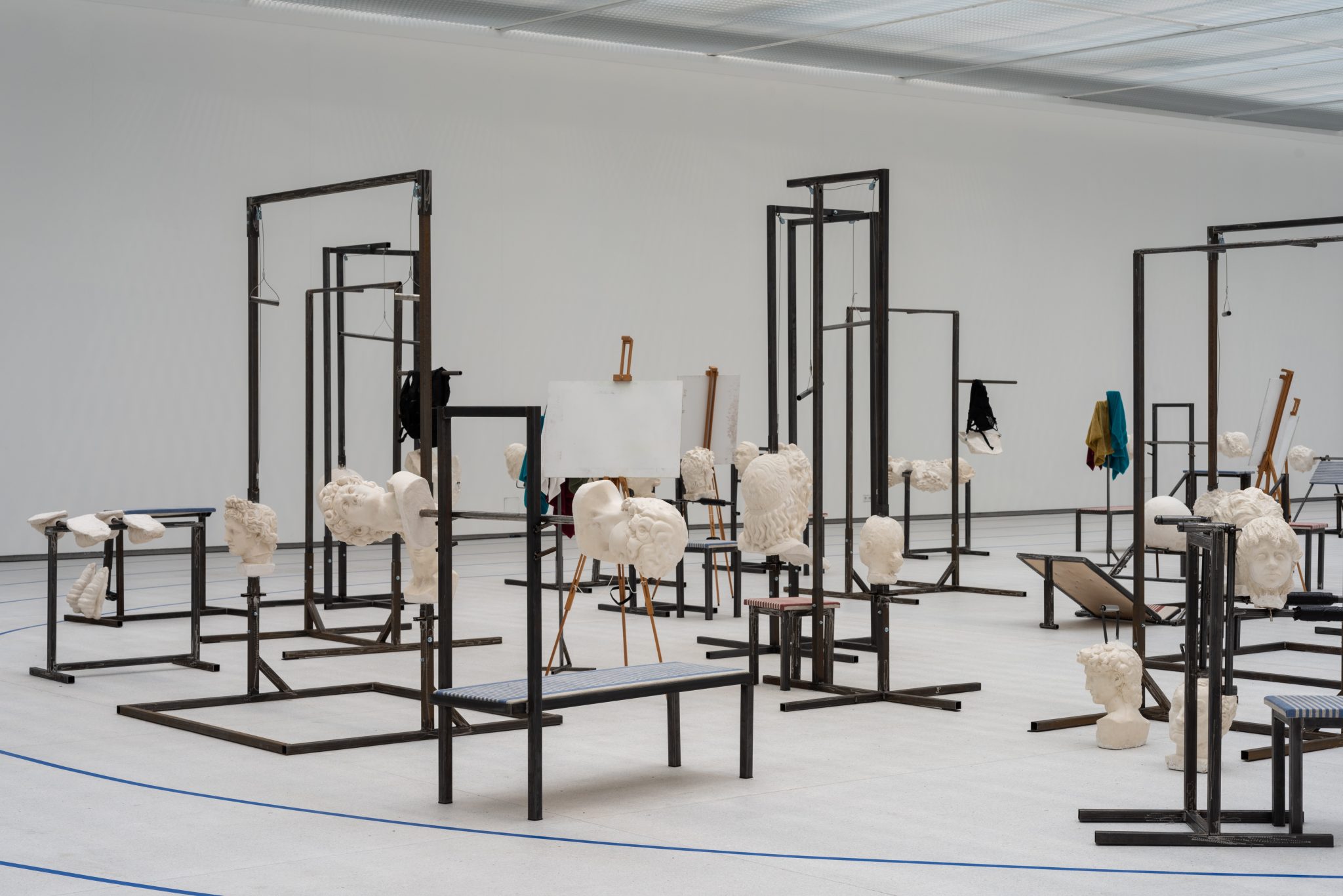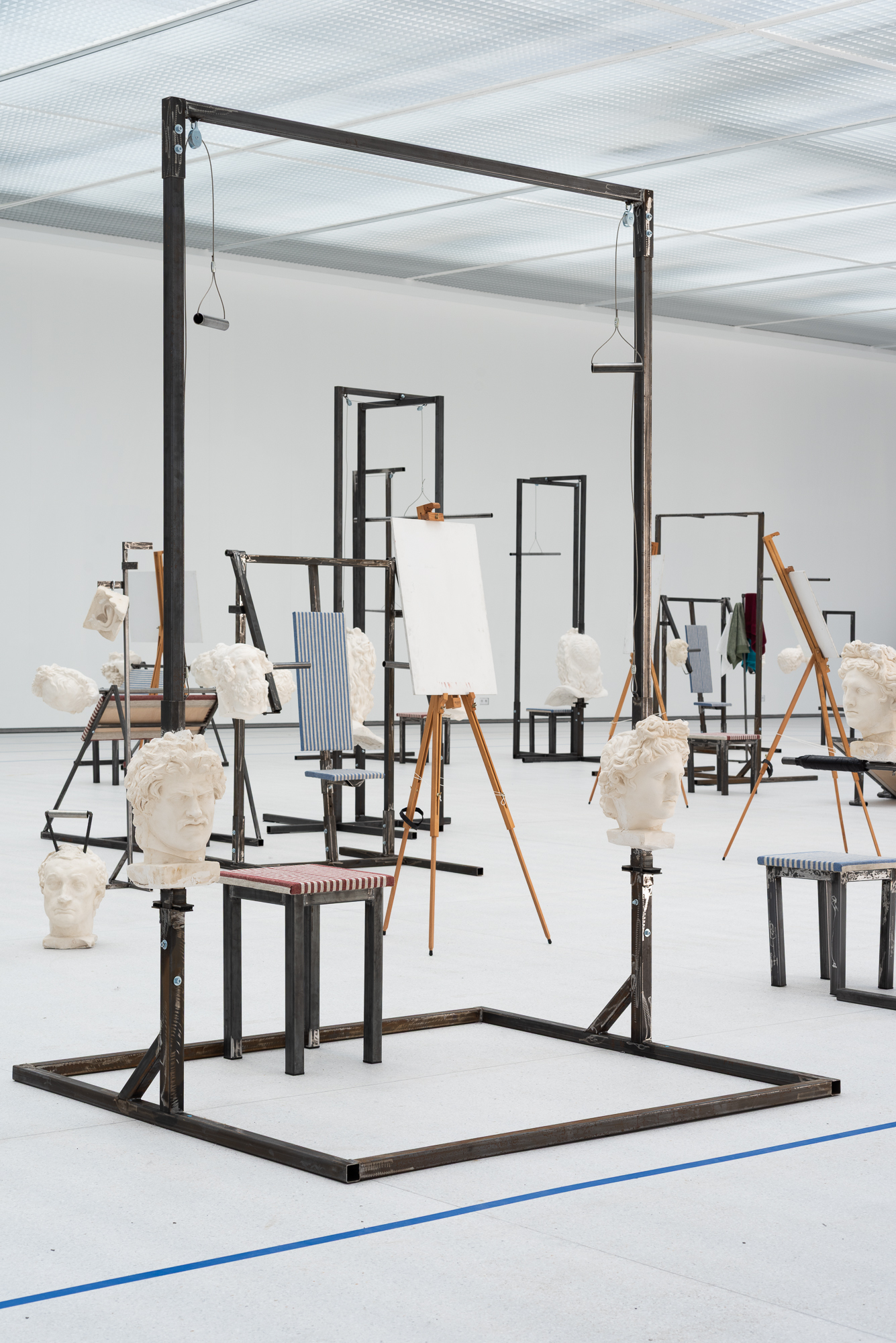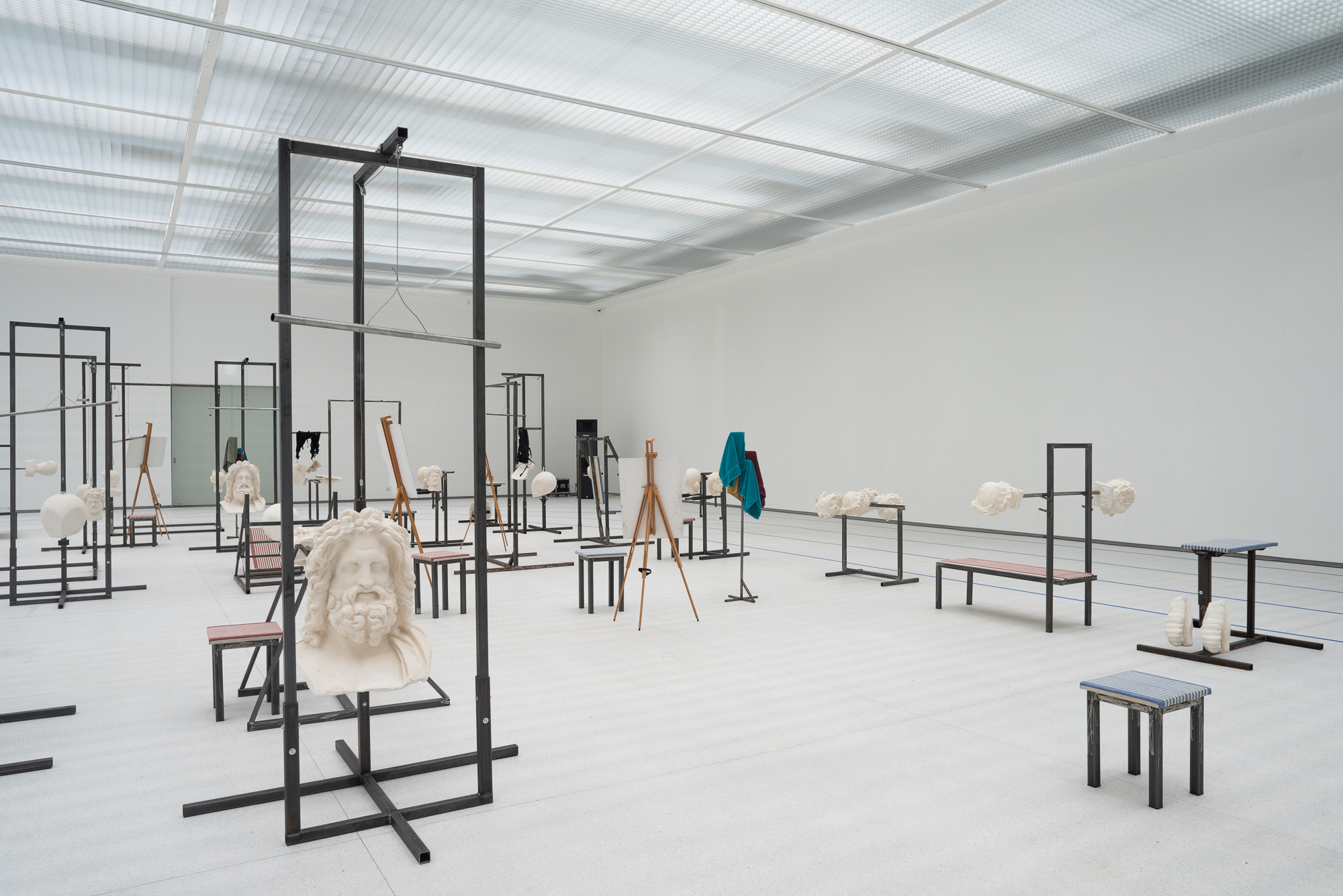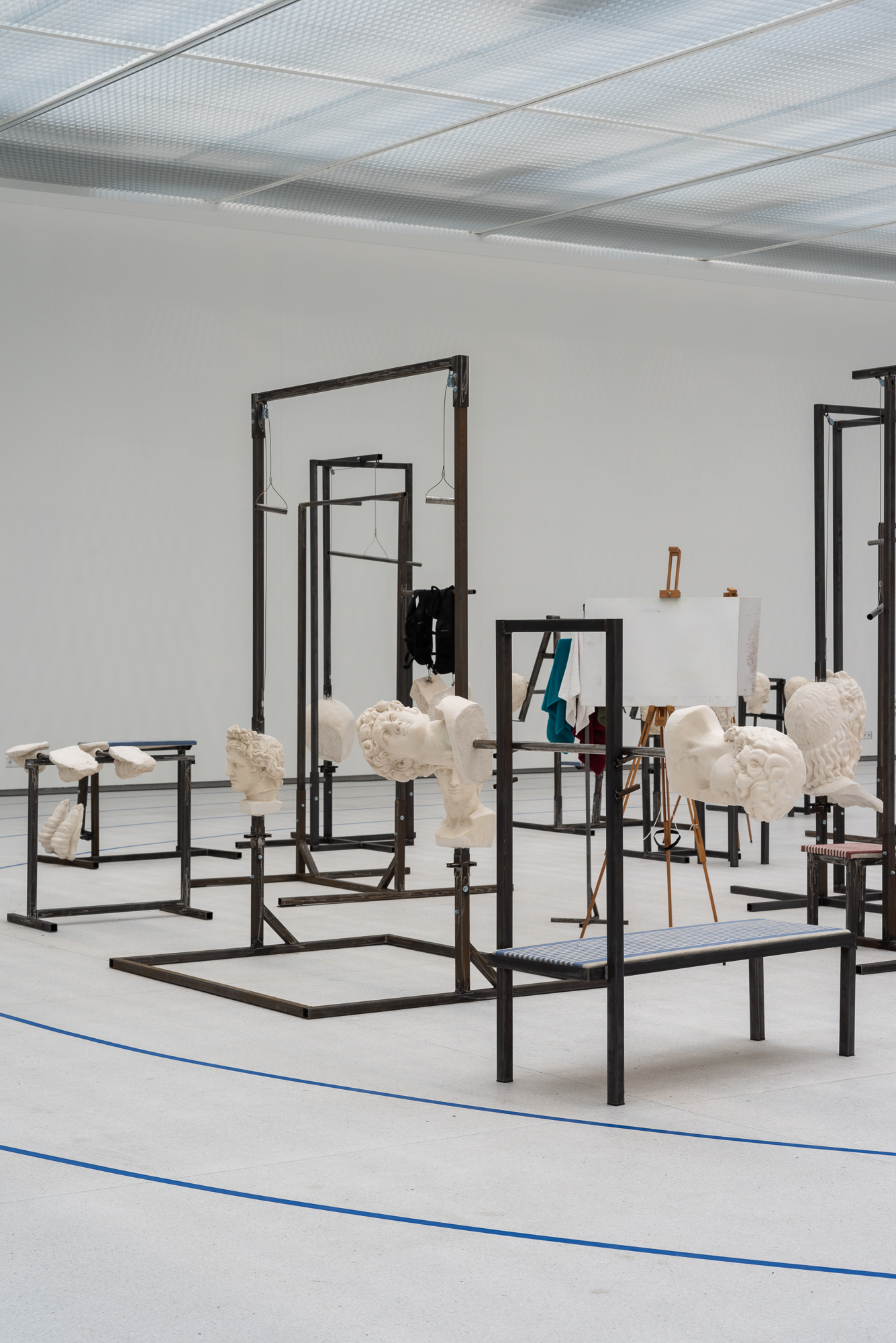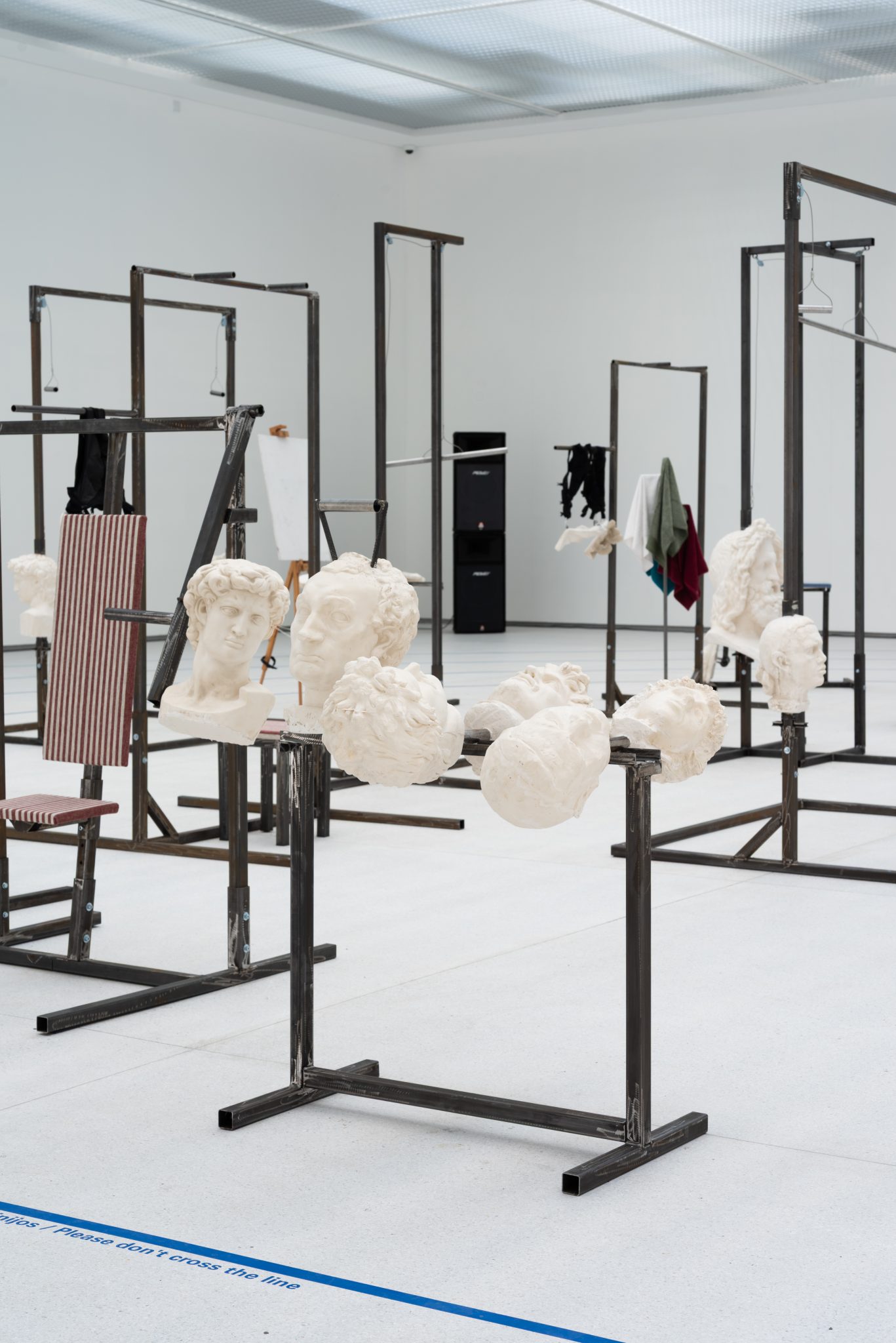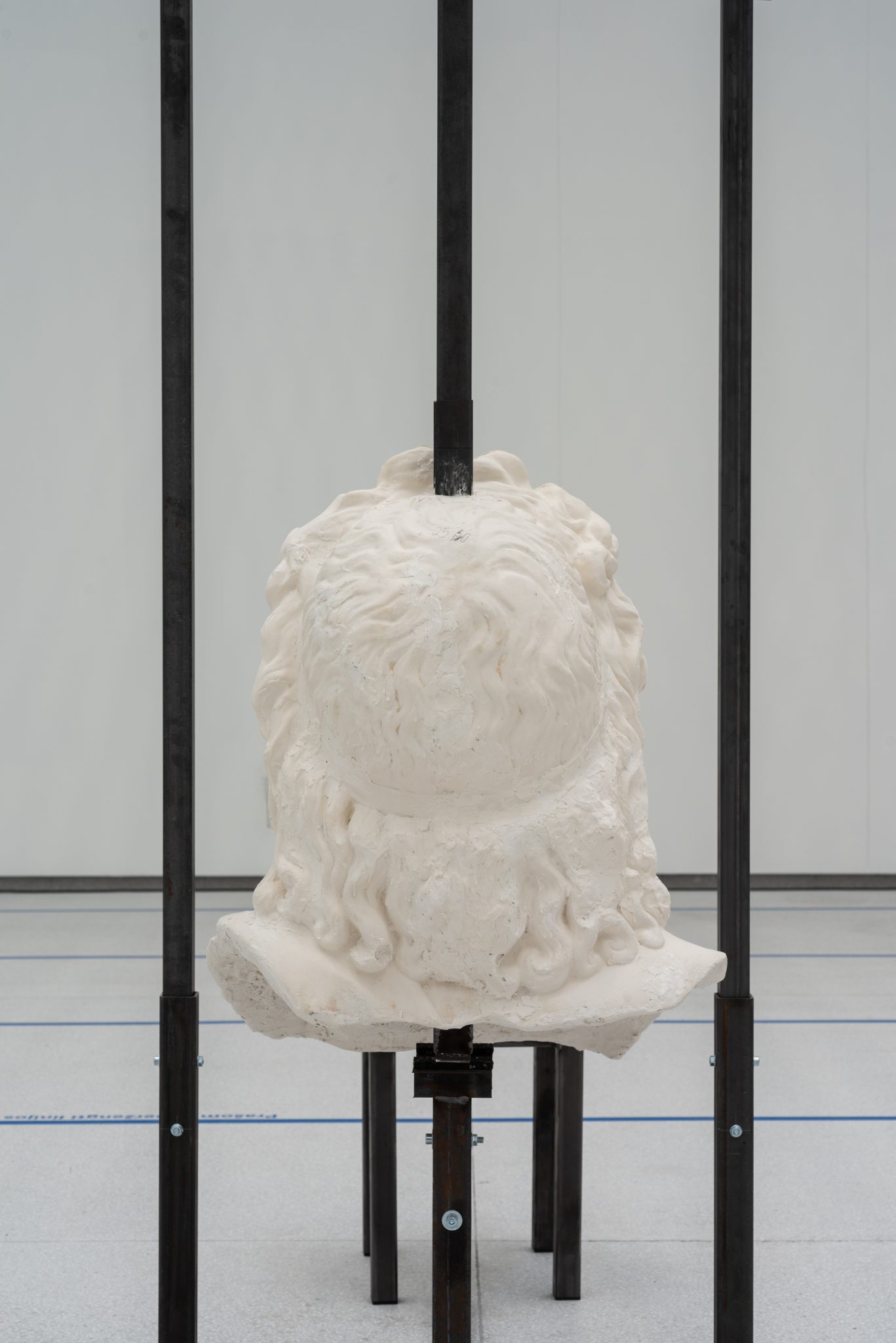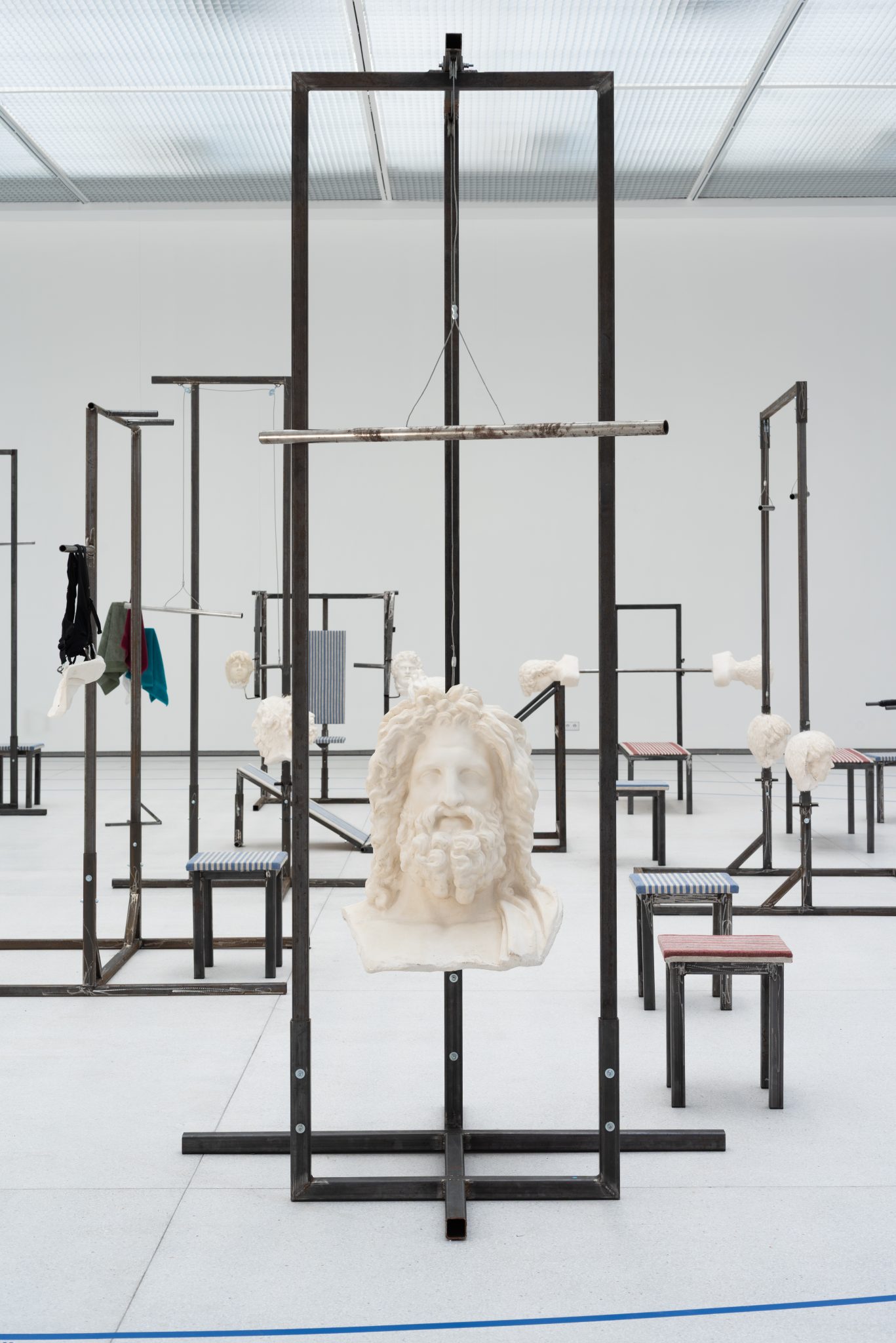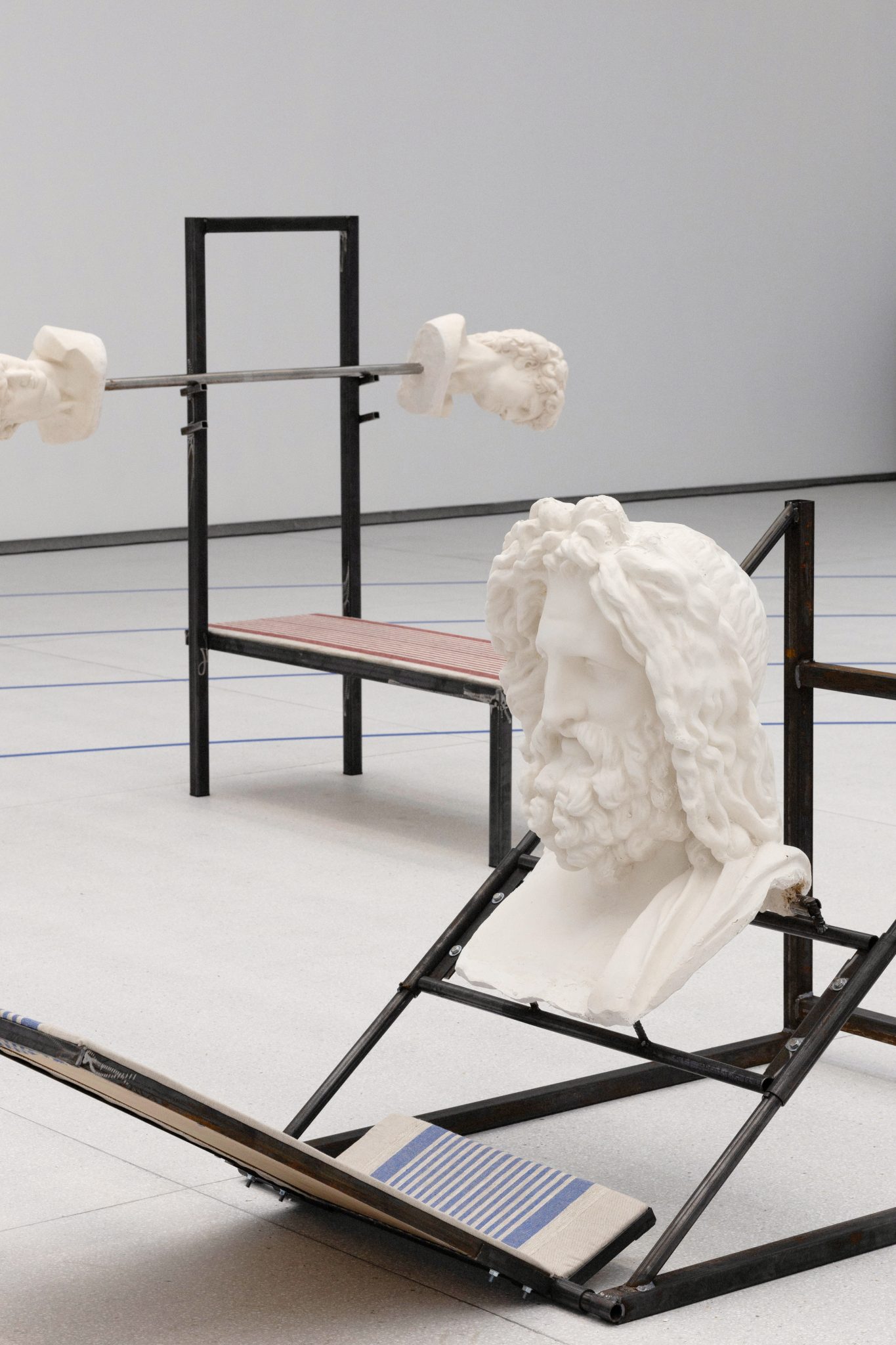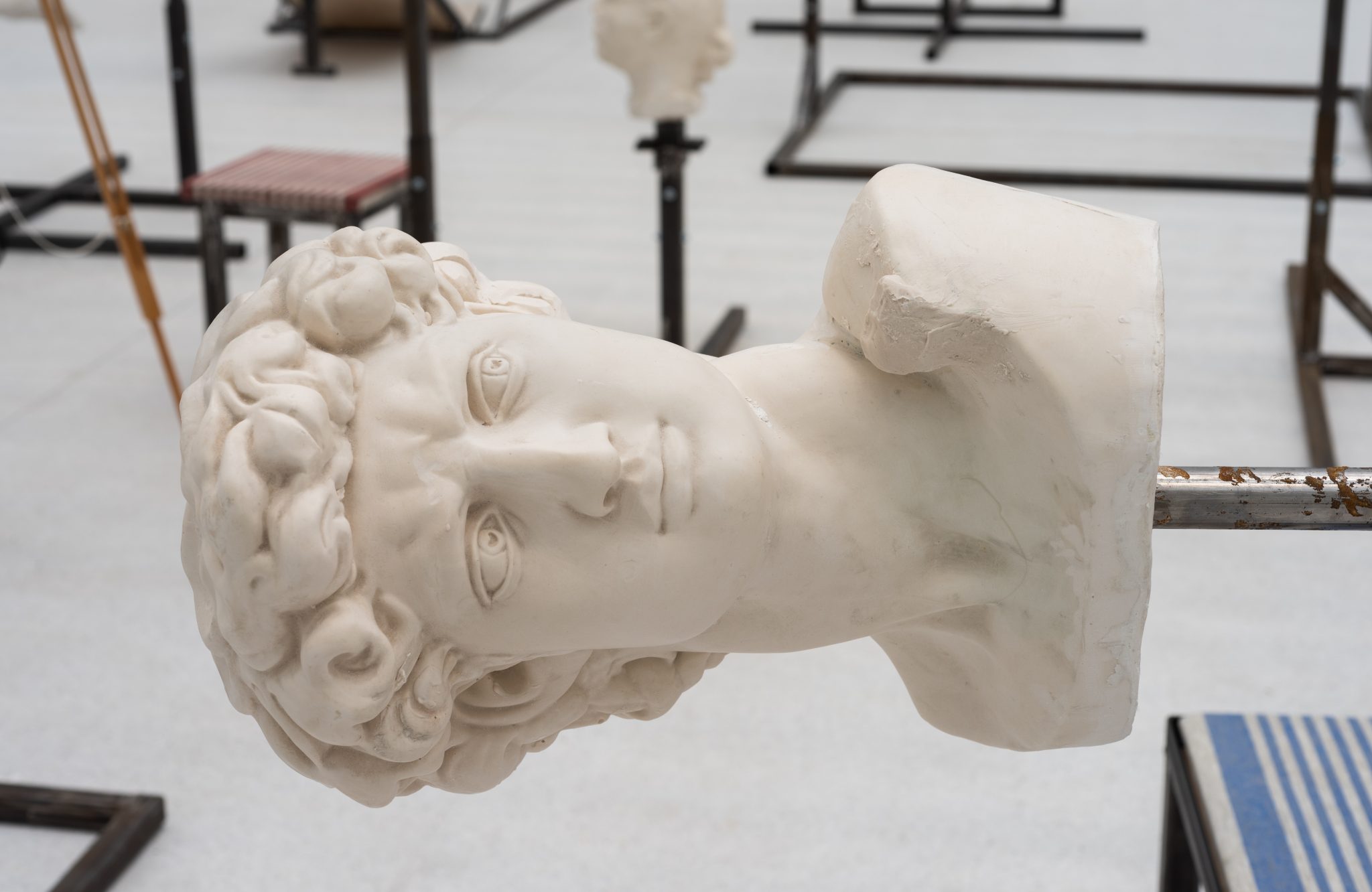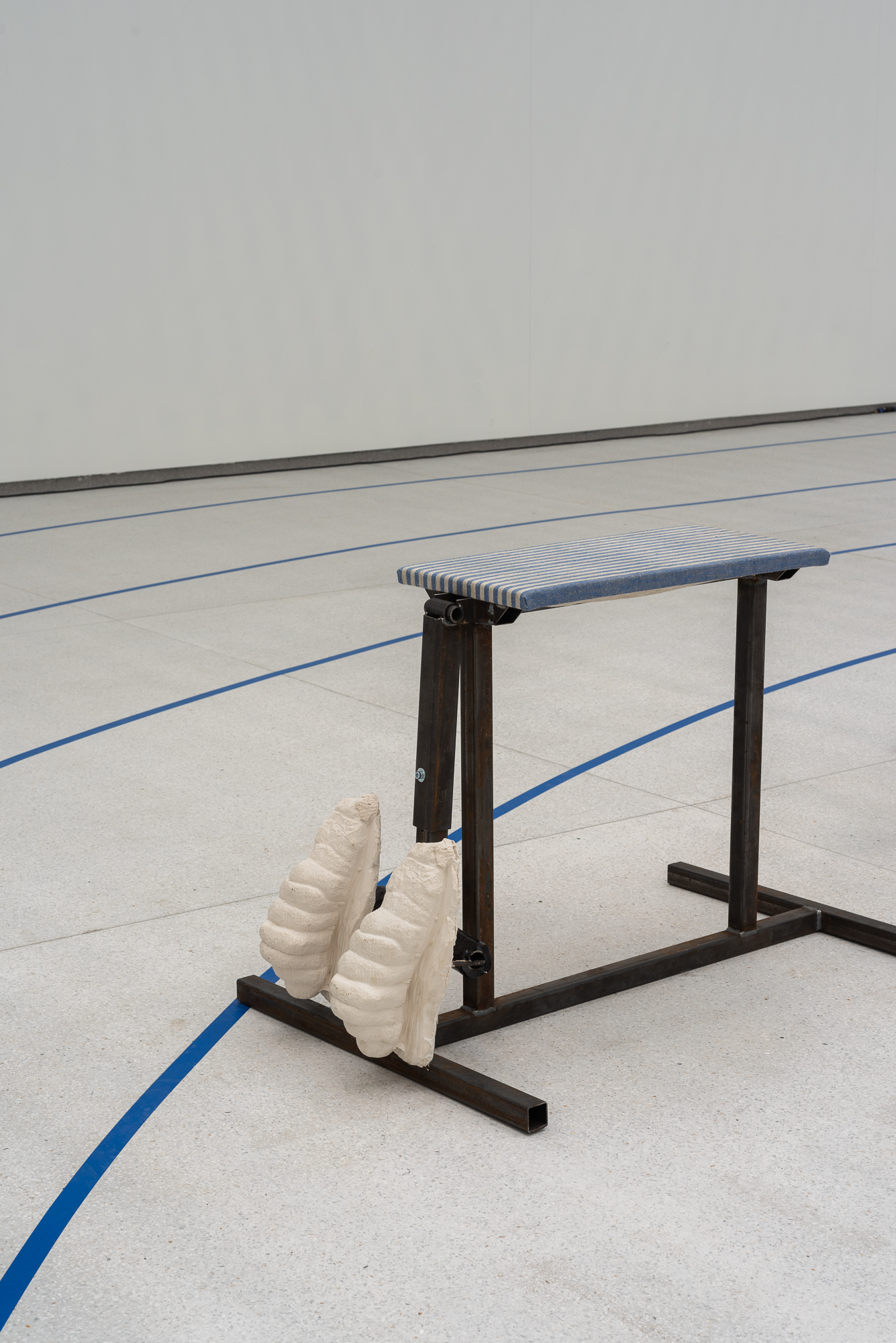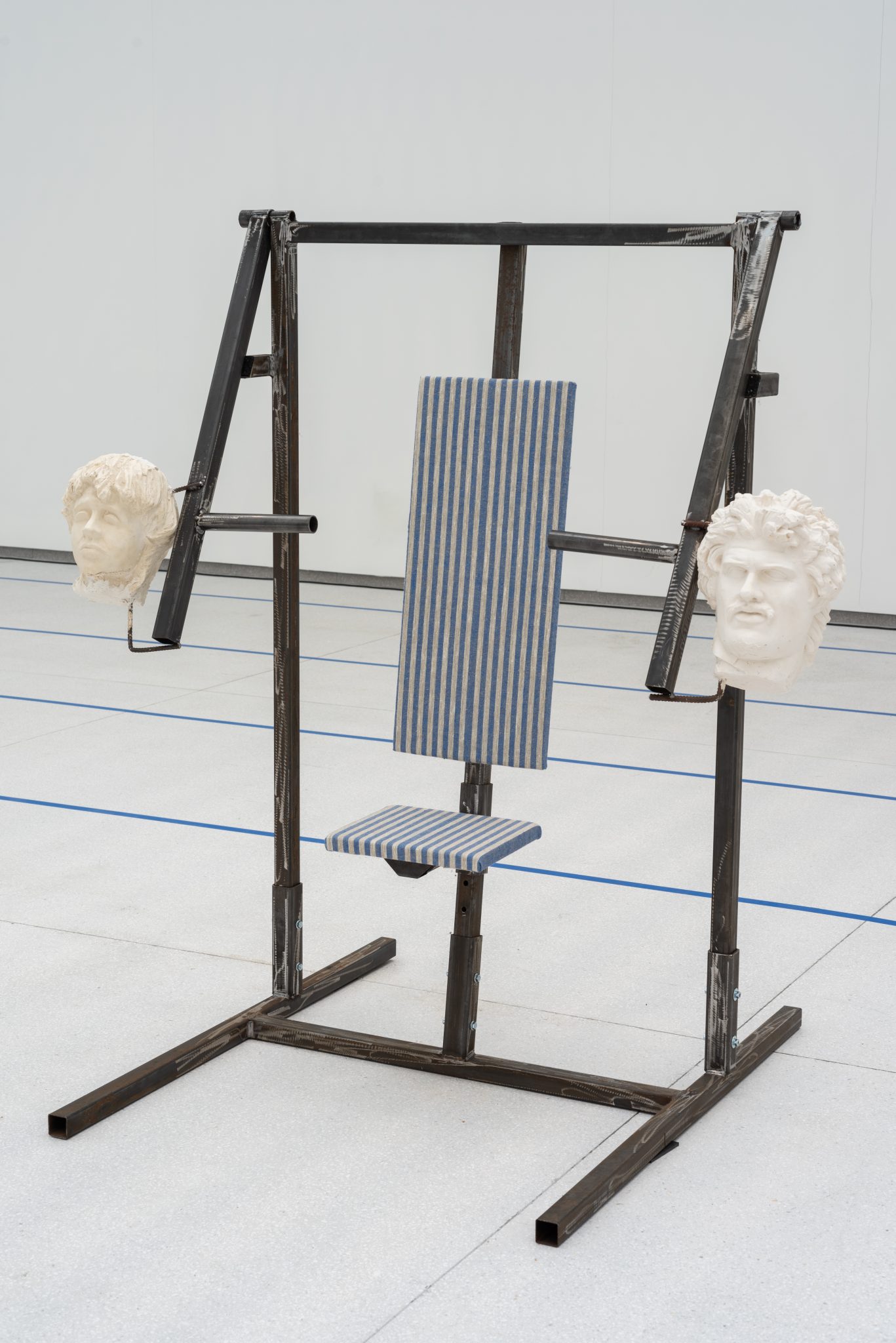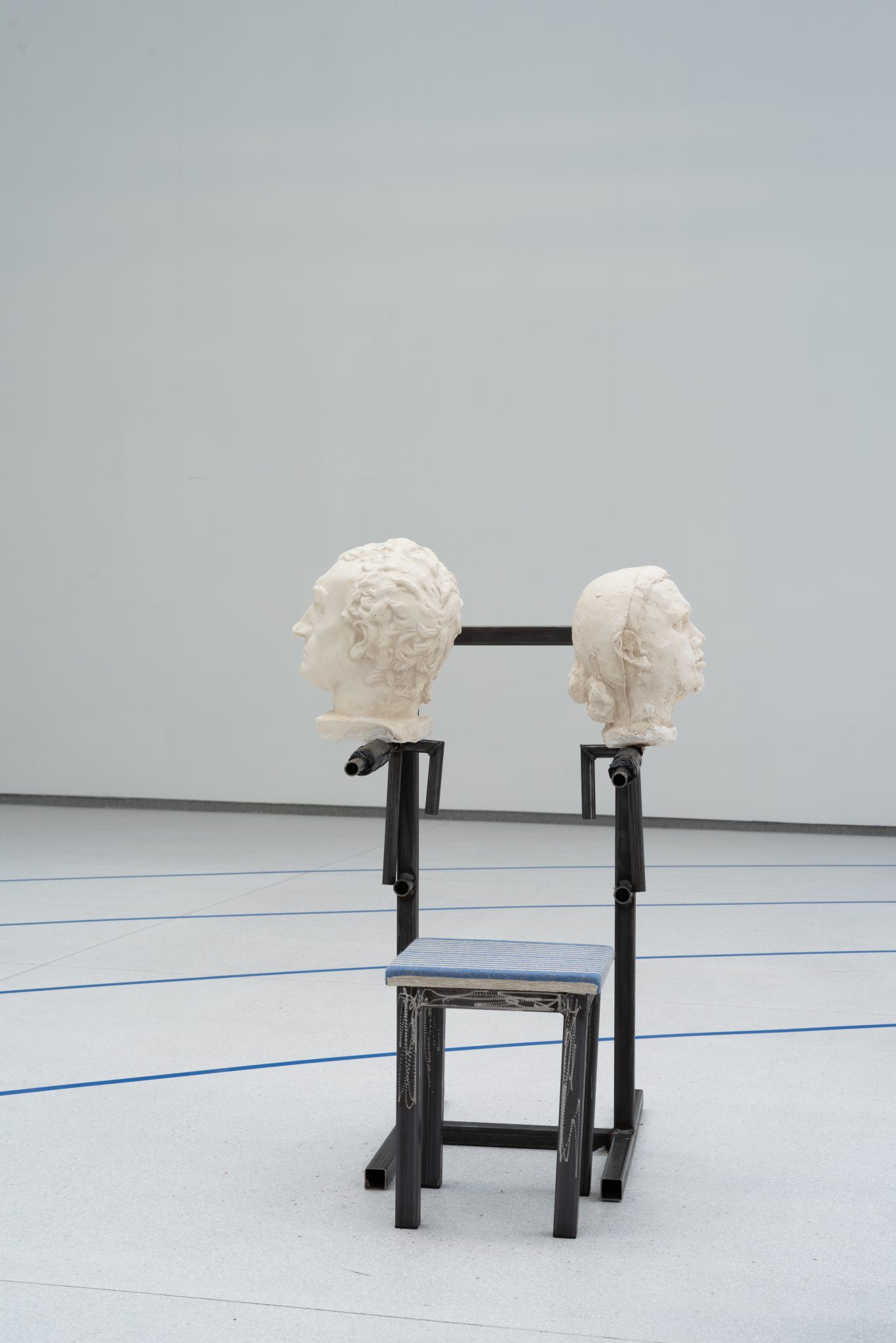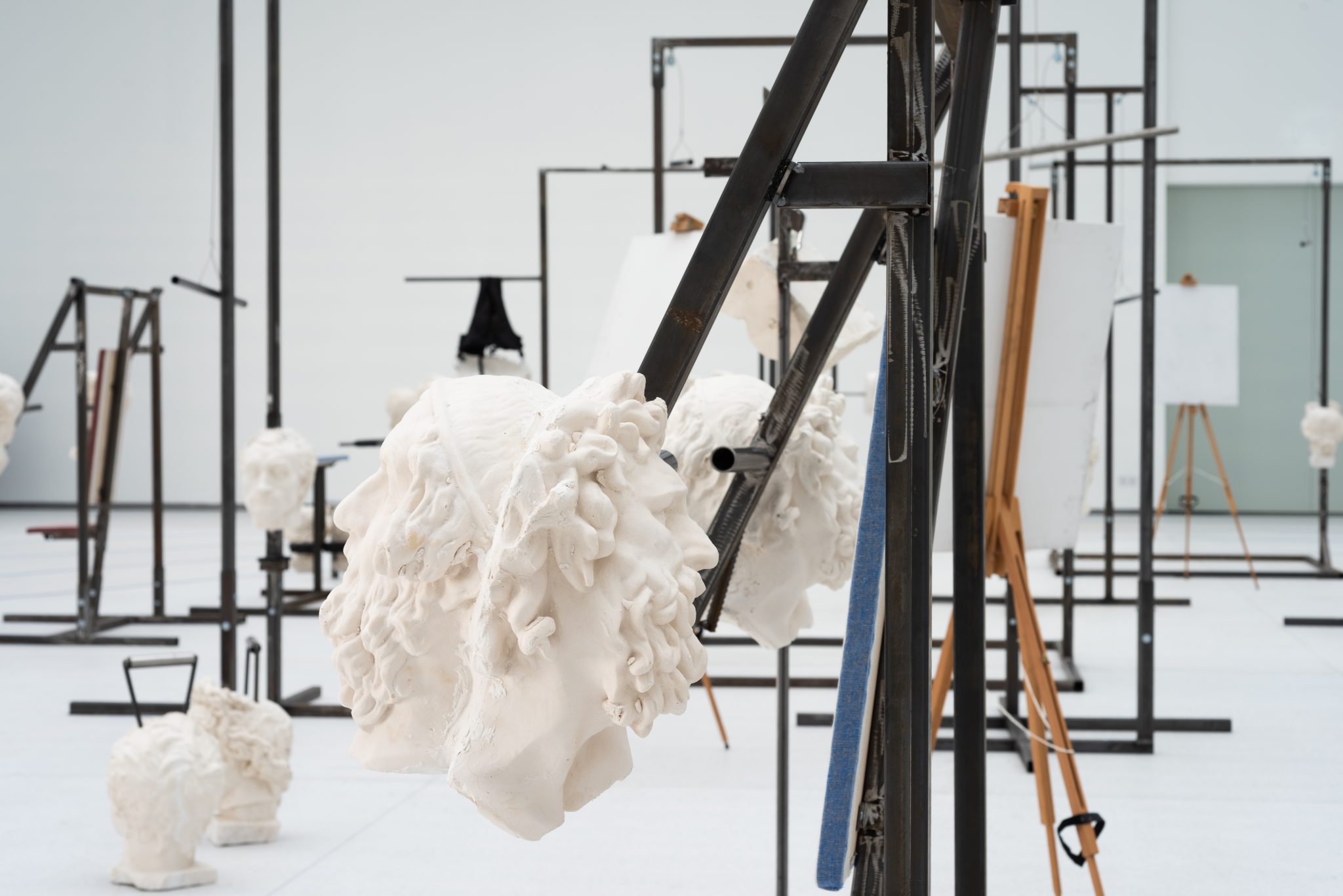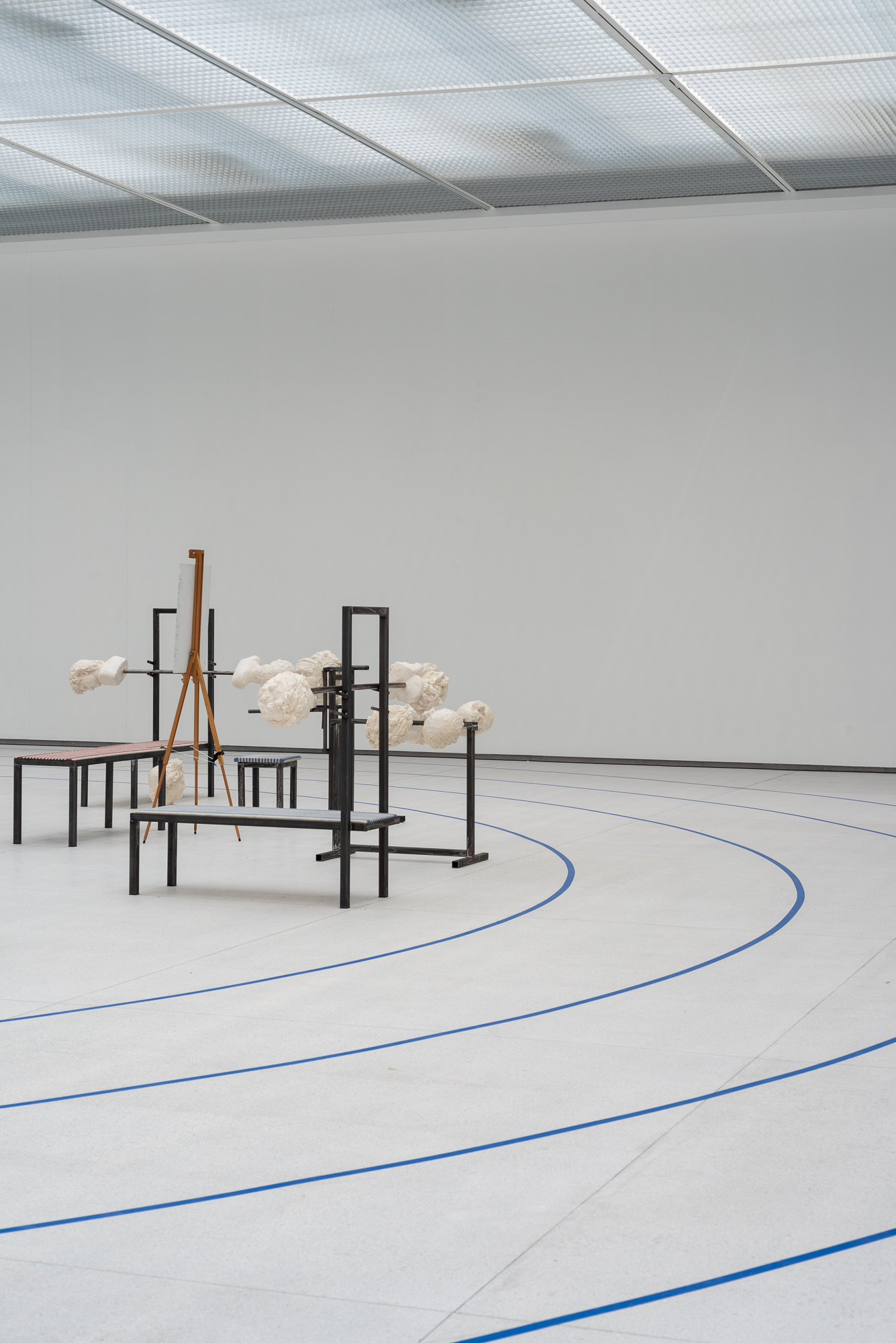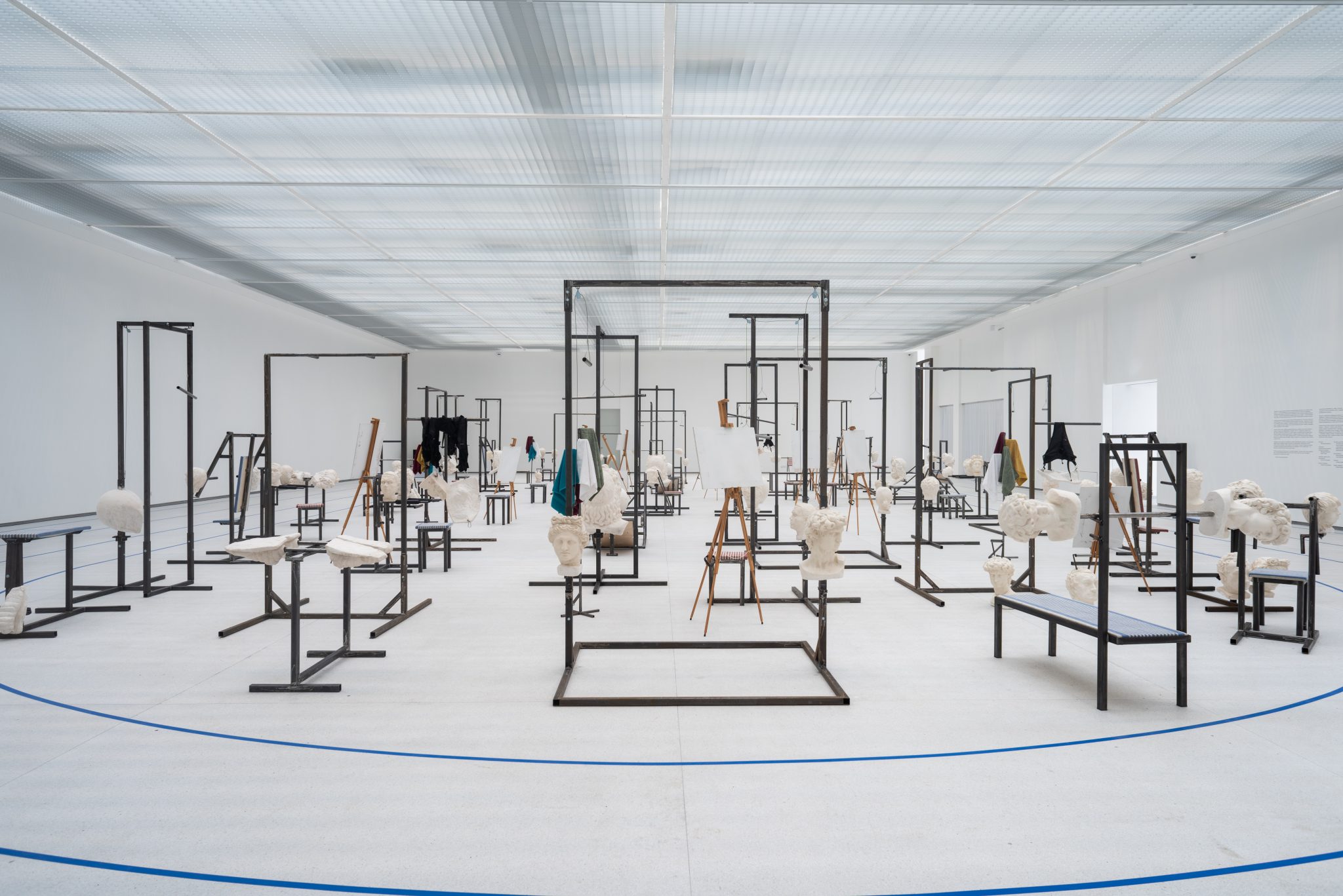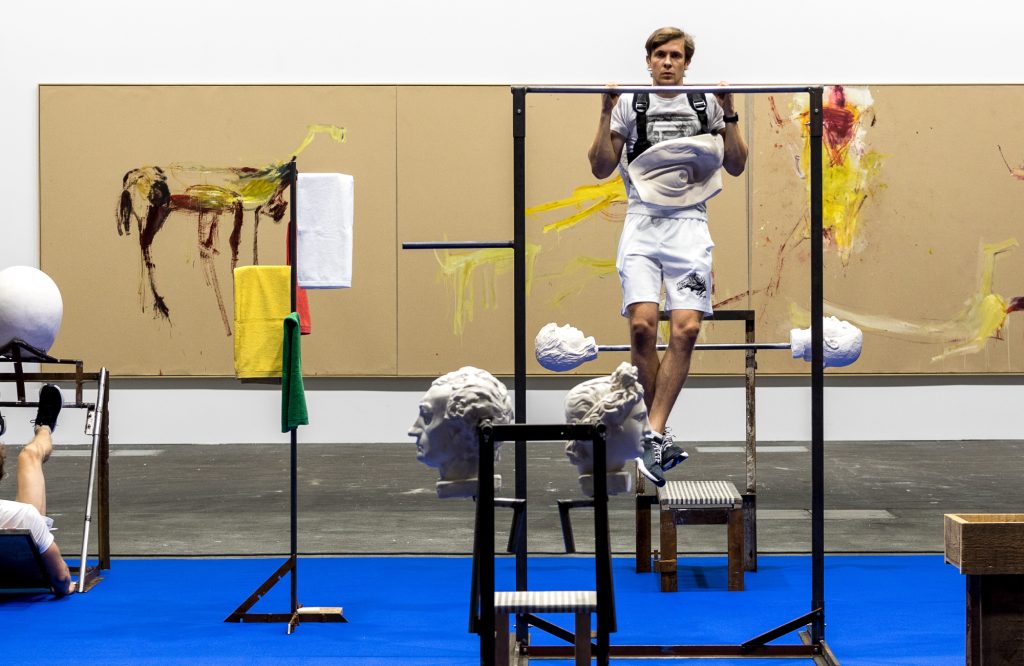
The Great Hall of the Contemporary Art Centre (CAC) presents Physical Culture, a solo exhibition by internationally acclaimed Lithuanian artist Augustas Serapinas. This marks the largest and most ambitious presentation of his work to date.
The first iteration of Physical Culture was created in 2012 while Serapinas was a third-year student at the Vilnius Academy of Arts’ Sculpture Department. Since then, various versions of the installation have been exhibited at major international contemporary art platforms, including Unlimited at Art Basel in Switzerland (2023), 1857 project space in Oslo (2017), Bâtard performance art festival in Brussels (2016), and Frieze art fair in London (2016). The CAC now presents the most expansive edition of this work, covering 1,000 square metres and featuring fully operational fitness machines where replicas of plaster sculptures replace conventional weights.
The installation is inspired by Serapinas’ experience as a student at the National M. K. Čiurlionis School of Art in Vilnius, where art education follows a classical methodology emphasising life drawing and the mastery of painting and sculpture techniques. Revisiting the school’s archives, Serapinas reconstructs copies of his own student work, such as portraits of his classmates, an earthworm, and an alien, as well as plaster models once used for drawing classes. The exhibition includes replicas of well-known sculptures, such as Michelangelo’s David (16th century) and Apollo Belvedere (2nd century), long considered exemplars of Classical Antiquity.
The installation is activated by both individuals practicing academic drawing – traditionally focused on copying classical sculptures – and groups of visitors who will engage with the artwork as a functioning gym. Audiences will have the opportunity to take a closer look at Western art history and rethink local education systems, which emphasise repetitive practice and diligent, hard work – paralleled here with the discipline of working out in a gym.
The Lithuanian title of the work, Kūno kultūra, plays on the dual meaning of ‘physical education’ and the broader educational system, referencing the legacy of ancient Greece, where the cult of the body – still dominant in Western culture – originates.
—-
AUGUSTAS SERAPINAS (b. 1990, Vilnius) is one of Lithuania’s most internationally active contemporary artists. A graduate of the Vilnius Academy of Arts’ Sculpture Department (2013), his installations tell the stories of memory, people, and places. By assigning new characteristics to everyday objects and spaces, he shifts how we perceive and experience them. Often collaborating with local communities and involving them in the creative process, Serapinas incorporates subtle humour in his work to refer to Lithuania’s geography, history, and culture.
His work has been featured in numerous biennials, including the 57th Venice Biennale (2017), RIBOCA1 and 2 (2018 and 2020, and the Toronto Art Biennial (2022), and exhibited at institutions such as Kunsthalle Wien; Pinakothek der Moderne, Munich; and M HKA Museum of Contemporary Art, Antwerp. His work is currently on view in solo exhibitions at Galeria Arsenal in Białystok, Poland (until 2 March 2025) and ICA Milano in Italy (until 15 March 2025). His pieces are also held in prominent public and private collections, including the Tate Collection, UK, Centre Pompidou, Paris, and the Musée d’Art Moderne de Paris.
With its connection to the National M. K. Čiurlionis School of Art, this exhibition contributes to the celebrations marking the 150th anniversary of Mikalojus Konstantinas Čiurlionis’s birth.
Title image: Nicolas Gysin
